Sunflower Seeds Inside Your Pockets

Take these seeds
And thrust them deep inside your pockets
So that when you die and your body becomes the earth
Sunflowers will grow once again from the land you killed to claim.
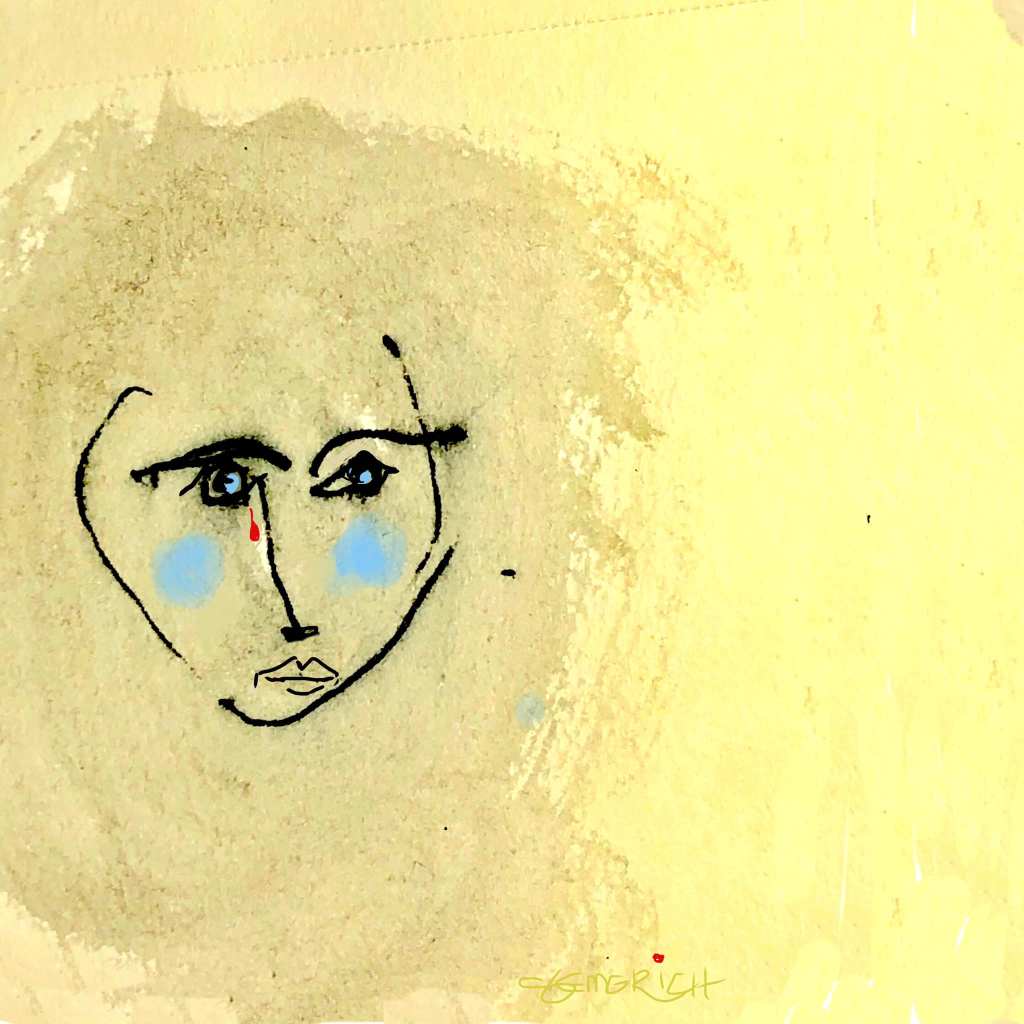
Ballerinas and camouflaged beauty queens will greet you in the streets
With pirouettes of spinning bullets behind barricades of sheets.
My grandmother will serve you up Molotov’s cocktails.
The orphans you murdered will dance around you sleepless until dawn
So that sunflowers will grow once again from the land you killed to claim.
Do you fear for war?
Ask of the stillness evermore,
Ask of the field, or ask the breeze, and ask the birch and poplar trees.
Ask of the children who now lie beneath the birch trees and the sky,
and let their mothers tell you once more
Whether or not you should fear for war.
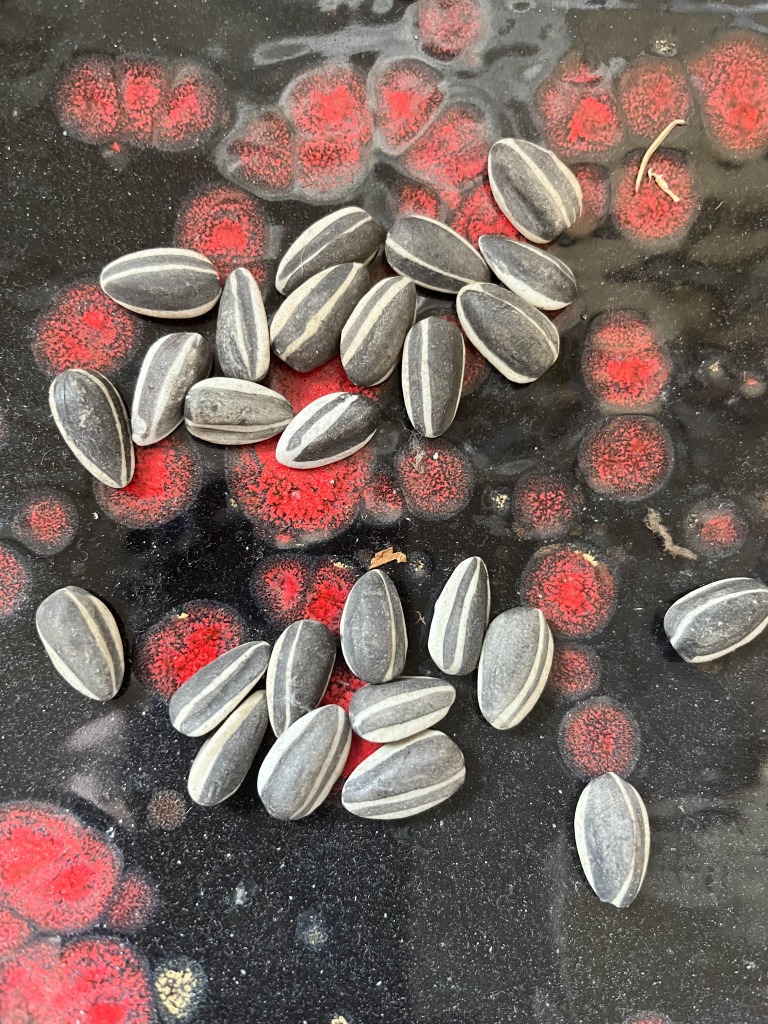
They died so that the children from ev’ry shore
might live without your fear of war.
Ask those who fought, and those erased,
ask those planted in the rubble of Mariupol and Donetsk Oblast
Ask the women you embrace.
ask your mother –ask my wife–,
So that you will wonder never more
Whether you have cause to fear for war.
Who longs for war?
Who longs for war?
No one but those who are no more.
No one living longs for war
But war cares not for your longing or yearning for living.
Or your fears for war
War will always arrive uninvited to your door.
When war comes calling to your front door.
You cannot lock the war outdoors.
You cannot run and hide behind your chair
Or bury your head under the covers of your bed.
When war comes to your front door
There is nowhere to run, nowhere to go
The corpses of your neighbors will hinder your flight
You cannot let fear become your general
To give up the fight
To surrender to might.
Instead, you must stand with the sunflowers in the golden fields
Stand with our heads facing the sun.
Pour your bravery into an empty coke bottle
And pick up a gun.
Stand for freedom, for the children we have lost
Stand up for liberty, against the tide of tyranny.
Stand up for yourself as much as any other.
Summon your courage to stand like man,
Like a like a clown, like a woman, like a child.
The cries of their answer rises loud and clear
for all people, ev’rywhere, to hear.
The message now is as before:
Do not fear,
Do not fear,
Do not fear for war,
For war is already here
© Igor Goldkind March 27, 2022
For the Ukraine and for America

The Seeds of War
Tweet
https://tinyurl.com/Sunflowerseedsinyourpockets
TAKE A DEEP BREATH by Igor Goldkind and Frederic Iriarte

The Cure for Pandemania is Here!
An Album of Original Spoken Contemporary Poetry and Music
– Making Sense Where Nothing Else Does –
Original poetry by Igor Goldkind
Music by Frederic Iriarte and Igor Boyko
Launching September 5th at The 2020 International Beat Poetry Festival (Normally in Boston, now virtually everywhere!) https://www.youtube.com/channel/UCilhqGXf2CAARg7N7EjwNQg
The Festival Will be streaming 3 original music videos from the album for the first time.
TAKE A DEEP BREATH is available for download exclusively on Bandcamp
9 Tracks, 40 Minutes, $18.00 $15 EU
Original Words, Music, Video and Antidotes for Living With Uncertainty
Internationally renown fine artist and producer Frederic Iriarte and American Poet Igor Goldkind have collaborated on 9 original tracks of musical interpretations based on Igor Goldkind’s forthcoming collection of poetry also entitled TAKE A DEEP BREATH.
The album of 9 tracks is being launched as a complete work at this year’s International Beat Poetry Festival and will be released for download at midnight this coming Saturday, September 5th.
This unique multimedia work was written and produced during the pandemic in Stockholm, San Diego and Moscow. It is intended as an artistic attempt to help us live with uncertainty and survive catastrophe living.
“TAKE A DEEP BREATH is most important piece of Spoken Word Art to come along at just the right time: right when we all needed it the most!”
– Henry Rollins
TAKE A DEEP BREATH and step out of your comfort zone.
Just don’t look down.
2020 has been a year of both social, economic and psychological upheaval. Humans have been required to adapt to drastically changing circumstances without forewarning and without certainty as to the outcomes.
We are being challenged as a species to adapt.
Adaptation is our genus but it is also painful and exhausting.
TAKE A DEEP BREATH is a guidebook: a pause for a moment of reflection. Take a break from panic and get a clear view of where we are as individuals, as a people and as a species.
Covid-19 has literally attacked our humanity however in doing so has done us the service of reminding us of our shared humanity, our common mutual vulnerability. These are hard lessons to learn and uncomfortable changes to be made for us to survive. TAKE A DEEP BREATH is a pause in the gloom and a chance to regain our strength and resilience to all carry on.
TAKE A DEEP BREATH is a step backwards in time when poetry and music were used and appreciated as tools for contemplation, meditation and reflection on the most crucial factor in our lives. Now that we are being confronted and overwhelmed with multiple catastrophes, is the time to return to using poetry for what it is designed for:
Reflection, Meditation, Contemplation
Self-Healing and Recovery
We will survive.
The Science of Irrealism

“The truth is always an abyss. One must — as in a swimming pool — dare to dive from the quivering springboard of trivial everyday experience and sink into the depths, in order to later rise again — laughing and fighting for breath — to the now doubly illuminated surface of things.”
― Franz Kafka
We quest for meaningful truths about our existence and what we bring to bear upon our environments. Mathematics, science and technology enable our mechanical ability to crunch big numbers, calculate near infinite possibilities and deliver probabilistic results.
To be able to knowledgeably predict the multitude of buying behaviors of literally millions of customers using Amazon is an impressive computational accomplishment, in the service of consumer capitalism.
Or to be able to use peoples’ most personal and intimate preferences and tastes as unstructured data, to be sold onto those who would better manipulate our preferences for profit.
Profit motivates the interests of those who control data to use it in order to steadily limit the range of free (unpredictable)choices to achieve more predictable decisions. The more predictable the judgements of choice, the better the profit in meeting those wants. The freer the will, the wider the spectrum of discernment between what is needed and what is merely desired. Not ideal customer relations if your goal is for the customer to buy exactly what you tell them to buy and have already prepared them to buy.
But the truth is that we are all free to make choices, even when there isn’t much to choose from.
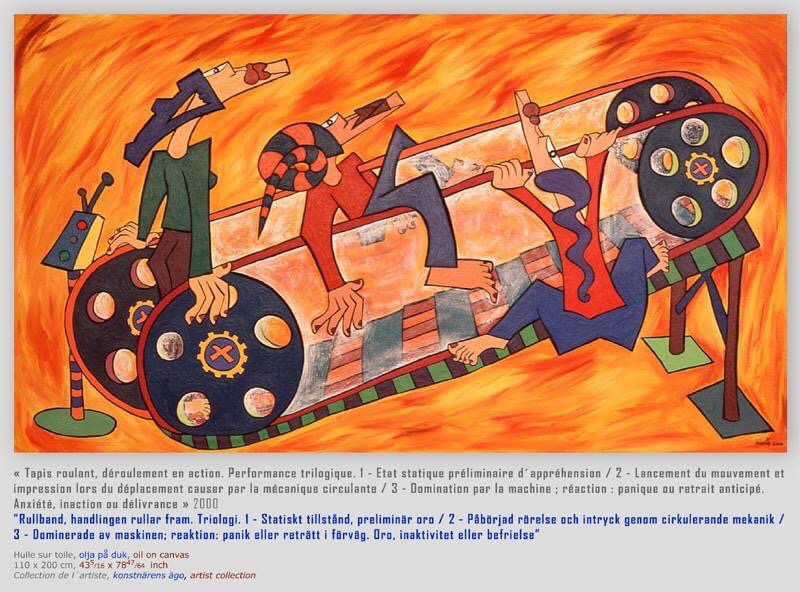
We are still free to deviate from the predictable norm and exercise our wider, human judgement in our choices. But to do so successfully is to break down the predisposed contexts to our decision making. We would need to embrace the fact of Uncertainty, unpredictability and see beyond the unreliable predilections of Causality. We must, so to speak, break our causal chains as they have been manipulated in advance by pragmatic and diabolic conventions.
To live outside of predetermined contexts, to break out of the “real world” into the actual world, where we really exist necessitates first the understanding of context in the service of truth. To understand the dichotomy between perception and interpretation we should adopt a new vocabulary: The study of interpretation is called Hermeneutics, which is the scrutiny of language mainly text, in the context of interpretation.
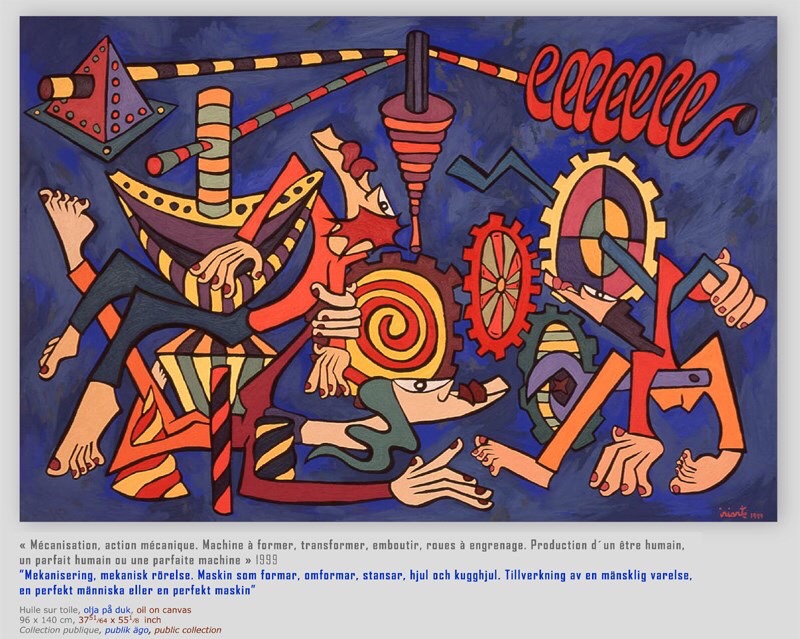
However, language is not limited to text. Much of human history (of consciousness), has been devoted to poring over sacred and heretical texts; but there is also the language of dreams and music which are open to both reading and expression.
Then there is of course, the language of the image. The useful lie of representation, predating photography by some 30,000 years.
In so far as hermeneutics is the study of text and its interpretations, Irrealism examines the language of images by posing that no one account or one representation of a reality can accurately account for that reality apart from that one possible narrative. But there are millions of narratives, millions of representations of any event or occurrence in reality. There exists a vast multiplicity of perspectives and vantage points of which no one of which can be designated the sole “true” representation. Namely because the quantum diversity of perspectives is fundamental to that singular truth. This is one of infinite possible worlds but the only truth that can be found in this assertion is within the context of an infinite number of real possibilities.
Thus we each stand on a ledge overlooking the infinite, the universe waiting for us to take a step in whichever direction we choose.
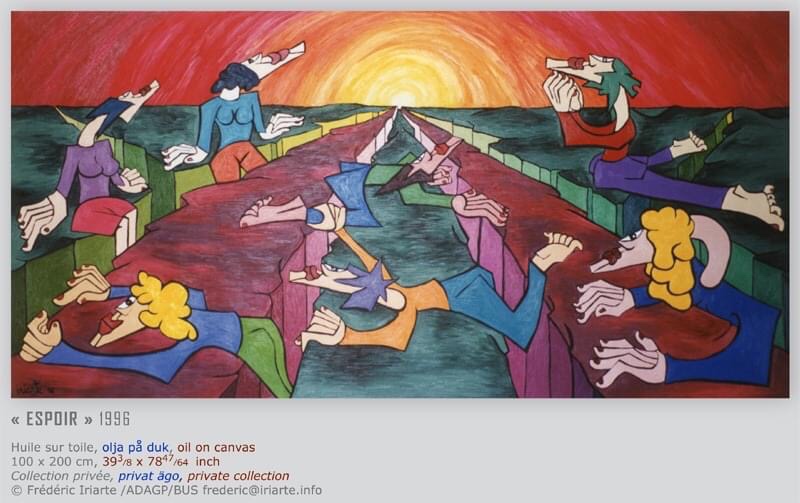
Irrealism casts light on this distinction. There is no one reality or real event, but a multitude of infinite possibilities, some more probable than others in terms of predictive outcome. But to understand this and sustain it visavis perception requires first a relinquishment of the notion of one sole truth or truthful perspective. The truth is not found in once account, one representation; nor it it found in accumulating and theoretically distilling all possible accounts and perspectives. Instead, the monotheistic idea of one truth needs to be exchanged for the greater truth of infinite diversity in limitless combinations.
Irrealism is a type of existentialist literary artform for which the means are continually and absurdly rebelling against the ends that we have predetermined for them. The whole causal relationship between means and ends is brought into question and we gain the insight of restraining from linking events, so as not to fill in gaps with significance.
If we can easily detach significance from coincidental events and understand their own phenomenal existence without added meaning, then equally we can detach significance from events that just happen to follow each other in time. By freeing events and objects from the phenomenal artifice of a causal chain of meaning, we gain an irreal insight into the true nature of events and objects as they exist.

Like existentialism, Irrealism has presented itself as both a philosophical argument and a work of art in which the philosophical principles are demonstrated by the fictional subjective experience of a protagonist. For examp0le, In THE MALTESE FALCON, Dashiel Hammet’s existential detective, Sam Spade is a free man as he is free from the compulsive and lethal greed of the antagonists. At the end of the film and novel, Sam chooses the virtue of duty over love .
By proving the reality of an existential choice as a empathetic human choice, the fiction delivers a more visceral universal understanding of the underlying principle.
Some lies reveal deeper truths.
Breaking attachment to one true account or representation permits the “irreality” of circumstance to become our context. This is akin to wavicle theory in which light is not reduced to one structural account but rather we adapt our contexts to fit the data. Sometimes light behaves like and can be measured as particles and sometimes it cannot. It can only be measured within the context of waves. So is light either a particle or a wave? Well neither, nor both. The truth is that light exists outside of our realm of contexts. It is not unreal to describe light as a particles, but it isn’t solely true either. Nor is the fact that light consists of waves soley true. This quantum perception version Schrodinger’s Cat does not dwell on the mortality of the cat but rather on our ability to perceive beyond uncertainty.
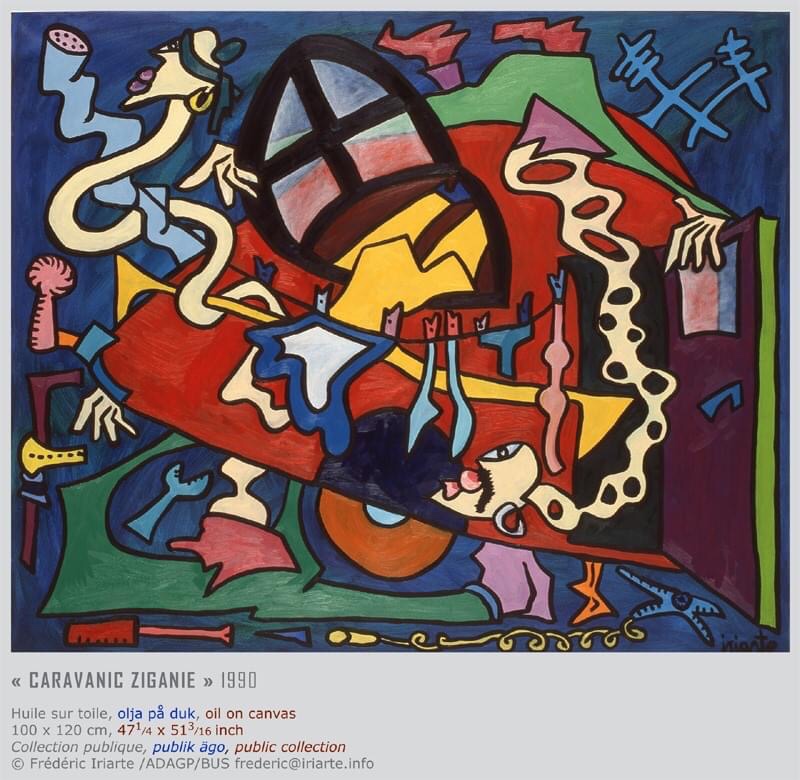
The awkward term “wavicle” is a contrivance of vocabulary: there is no such object as a wavicle. All there is, is a misleading name to make it easier for us to measure and understand the phenomenal nature of light, not its physicality. In this light, so to speak, Irrealism addresses the false dichotomy of physicality vs the phenomenal. Yes, the universe is a physical one and objects and events have gravitas and yes, the universe is merely comprised of what we perceive and subject to the limits of our own perception. The universe is neither singularly physical nor singularly phenomenal; nor is it both. As both interpretations hold weight in their individual contexts, neither are false but again neither by itself is true. The perception is not one of unreality (or falsehood or fantasy) but of irreality, reality is not above what we perceive and experience, but behind it.
So it is with irrealism. The philosophical premise of Irrealism is that both the physicality of objects and events is one context, whereas their phenomenal content, our perception occupies a separate but parallel context. Objects and events exist in both worlds’ the physical and the phenomenal.

Irrealism demonstrates the irreality of events and objects by demonstrating existence as neither/or. An irreality demonstrates objects and events outside of their contextual rules. Viscerally this can be expressed in Art & Music and cognitively, in philosophy and poetry.
In philosophy, the belief that phenomenalism and physicalism are alternative “world-versions”, both useful in some circumstances, but neither capable of fully capturing the other.
Irrealist art and literature features an estrangement from our generally accepted sense of reality. Which explains the often welcome sense of discomfort or unease that often accompanies taking in an irrealist perspective. SF and Horror are good examples of that unease and rumbling anxiety as entertaining.
An example of this would be Franz Kafka’s story The Metamorphosis, in which the salesman Gregor Samsa’s plans for supporting his family and rising up in rank by hard work and determination are suddenly thrown topsy-turvy by his sudden and inexplicable transformation into a man-sized insect. Such fiction is said to emphasize the fact that human consciousness, being finite in nature, can never make complete sense of, or successfully order, a universe that is infinite in its aspects and possibilities.
Irrealism is the Impossible and the Unexplainable laid as foundation for an art form that can directly communicate, by feeling rather than articulation, the uncertainties inherent in human existence and the irreconcilability between human aspiration and human reality.
This suspension of the temporal extrapolation of causality requires a vantage point outside of the law of causality, (that every phenomenon and corresponding qulia has a predetermining cause).
The balls falls down because you threw it up because of therule: what goes up must come down. This fundamental layman’s interpretation of Newtonian laws of motion of course derives from a specific time frame that is pre space travel. To travel back to this context and suggest that this law may not always apply universally and that there are contexts such as weightlessness for which the causal relation does not exist, is an example of irrealism.
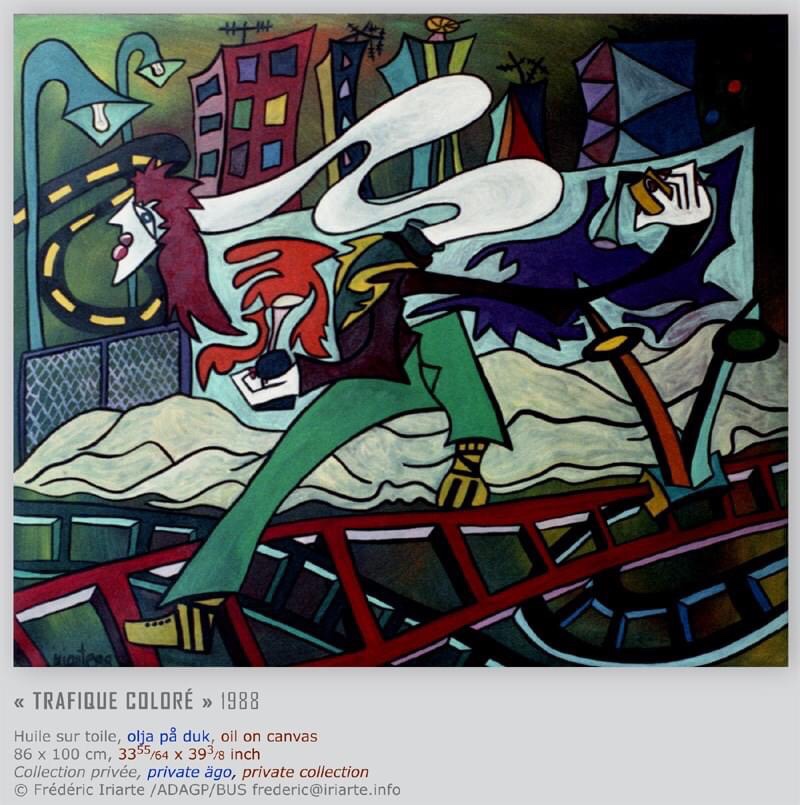
To suggest to Newton that what goes up doesn’t necessarily come down is to express an unreality to Issaic based on the context of his understanding. Moreover as Newton’s laws of motion are universally adopted as convention, to assert this truth too loudly will get you locked up in a mental asylum.
Those of us living Newton’s Impossibility know that whether or not the ball falls down is completely dependent on the existing context. To suggest a state of weightlessness to Newton’s context is an irrealism. It is false within the given context but true in a greater but remoter context. What we call ‘real’ appears to be exterior to us and perception-independent when in fact, it is neither. Irrealism exposes the mythic unreality underlying our virtual fixed world, the world we manifest with our minds by responding to certain stimuli in our environment. These stimuli and their interpretation sketch the internal map of our presumed outer world experience.
It is because of this out of context impossibilities that Irrealism is considered to be dream-like in nature, which is a justifiable description so long as we remember that the Irreal representation does not relate a particular dream that we might have had but instead evokes aspects of the dream-state within the work. Irrealist objects occupy our dreams as props for symbolic meanings much as one reads the symbolism within a medieval painting or a film wherein every object captured is there for a meaningful reason.

To understand that reality exists both outside of and inside of perception,( not in one or the other soley nor both together), is to glimpse the tapestry of infinite possibility divorced from the coincidences of causality. Quoting the American philosopher Nelson Goodman “as much as we might try to order our world with a certain set of norms and goals (which we refer to as the real world), the paradox of a finite consciousness in an infinite universe creates a zone of irreality. The Irreal is that which lies beyond [or behind], the real”) that offsets, opposes, or threatens the real world of the human subject.
Irrealist art highlights this irreality, and our fascination with it, by combining the unease we feel from a world that doesn’t conform to our desires; with the narrative quality of a dream state wherein safe and familiar realities are being constantly undermined.
“We are not speaking in terms of multiple possible alternatives to a single actual world but of multiple actual worlds.] Goodman makes no assertions regarding “the way the world is” and that there is no primary world version i.e. “no true version compatible with all true versions.” nor world-versions” of the world”. Instead he describes worlds as “made by making such versions”. As Goodman says, “Not only motion, … but even reality is relative.”
Irrealist art shows us this.
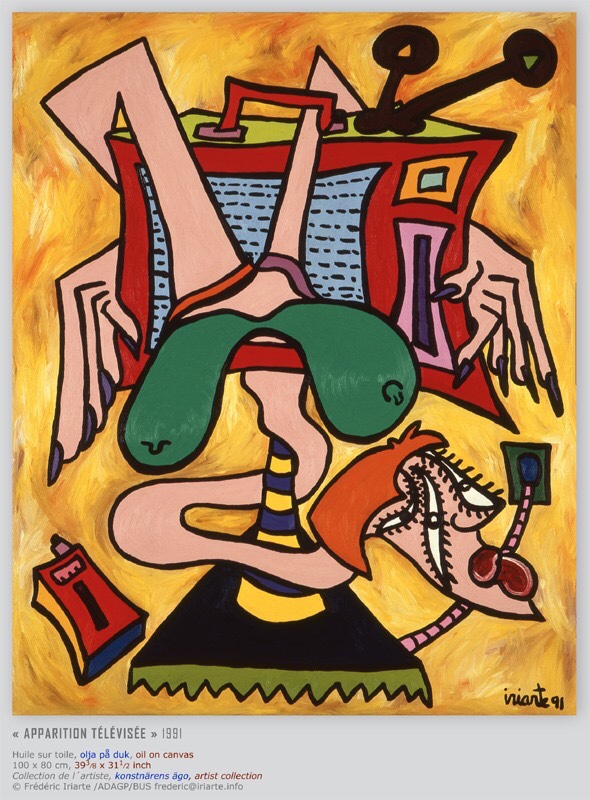
A successful irreal work of art, music or literature confronts its audience with a perception that cannot simply be translated as merely a fantasy, speculative or as a symbolist work. . Thus cut off from the familiar context of what is possible and ultimately explainable, impossible, one is left alone in the company of the absurd. It is thus communicates directly, “by feeling rather than articulation, the uncertainties inherent in human existence or, to put it another way… the irreconcilability between human aspiration and human reality.”
The artist Tristan Tondino writes, “Realism is an Irrealism. Reality is plurality – we partially create it, and we must open our universes and our perceptions to all possible versions of it.
Irrealism is a vaccine for living with the truth of uncertainty
© Igor Goldkind 2020. (all augmenting quotes are attributed to Nelson Goodman)
Thanks to Franco-Gallic Irrealist artist Frederic Iriarte [Frederic@iriarte.info] for the loan of his work. All images are © Frederic Iriarte and cannot be reproduced without his permission.
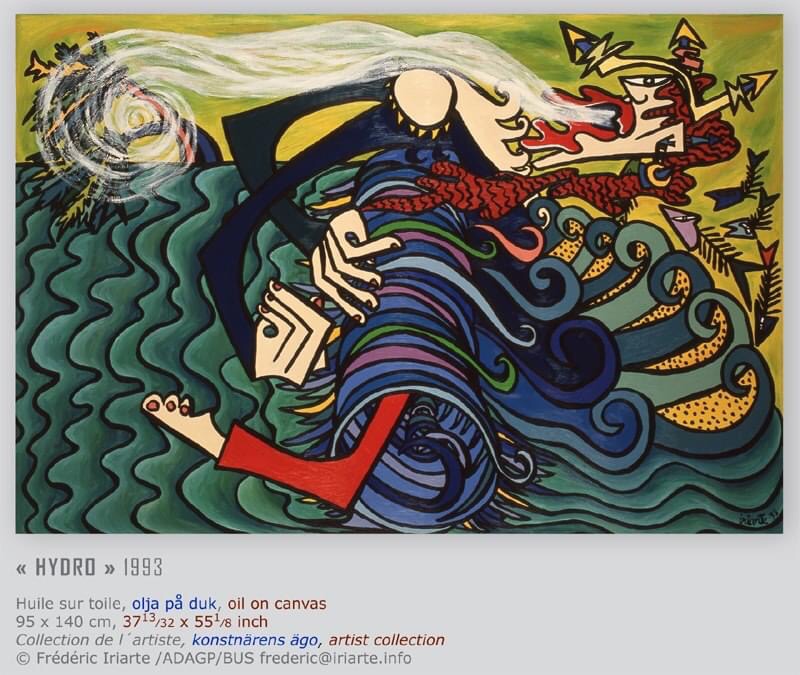
Thanks to Franco-Gallic Irrealist artist Frederic Iriarte [Frederic@iriarte.info] for the loan of his work. All images are © Frederic Iriarte and cannot be reproduced without his permission.
On Poverty and Consciousness

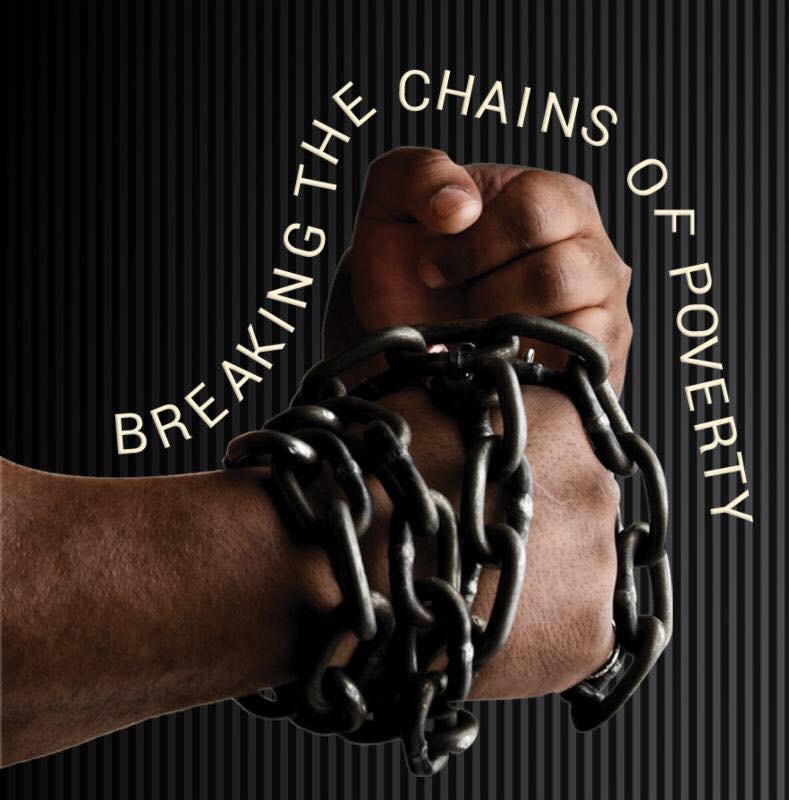 A new acquaintance asked me why I endured relative poverty and uncertainty in California when I could easily take a tech copywriting or PR job and be living comfortably.
A new acquaintance asked me why I endured relative poverty and uncertainty in California when I could easily take a tech copywriting or PR job and be living comfortably.
I answered, for which I’m sure someone reading this might wonder the same.
The answer is not simple and all has to do with my commitment to art and to the art of writing. It’s somewhat like a religious or spiritual calling; certainly as requisite of sacrifice and discipline as a monastery. (Read James Joyce’s Portrait of an Artist as a Young Man, if you need further elucidation on the subject). To become a great artist, which is what I believe I am becoming at this late stage of my life (or will at least die trying to be), takes total focus and constant dedication.
Not just to creation but to observation. Many of my best friends are not just poets and artists but scientists and mathematicians because they are processing their own observations through their own disciplines. When we talk and share words they read me and hear me, they comprehend how we’re all pursuing the same thing: the truth about life and the lives we are living.
Science and Art are really just two different vantage points in the same universe. During our Rennaisance there was no such separation between science, engineering and art. Just look at Da Vincis’s sketches if you don’t believe me. And this underlines the true failing of the formal education systems. No purely structured system can account for, much less process the unstructured data of experience.
But one truth I have learnt along this way is that we are all connected; both as a species and as sentient beings. Not just to those existing in the moment we all share but for all of us, from the very beginnings of awareness and rational self-consciousness. We are all brothers and sisters of the same mind, the same awareness that is awake and cognicent.
We all share the same biology of the mind.
I imagine that when extraterrestrial sentient life is contacted, it will be the poets and artists most open to the new who will not only best describe and communicate qualitative meanings with them but decipher their language(s) to communicate with them (more of “us”?), before the actual scientists can interpret their data and the military can rationalize the threat.
From the point of commonality; this sentience itself has a common shape or form in all of us throughout time and geography. It is our human nature.
My words try to sketch its outline.
Without needing to name a god, the Buddhists have been attempting to describe this commonality of all sentient beings, for thousands of years. In art and yes, in poetry too.
It’s what poetry is for: to describe the indescribable that is true for all of us, to all of us.
The known shining its single torch down a darkened corridor to the unknown.
The unknown (not the unknowable), has always been our mind’s final frontier.
We weren’t born yesterday. We did not just become aware of consciousness. The history of consciousness is the history of us, of the ‘you’ that is reading and comprehending these words.
You are no different in awareness than the Neanderthal who stumbled out of her cave and looked up at the stars in wonder. Every astronomer I have ever known harbors that exact same wonder. Our tools maybe bigger, faster and deadlier but our minds haven’t changed, just adapted to our tools. They’re physiologically still the same; and only enhanced by the evolution of language, both associative, symbolic and metaphoric.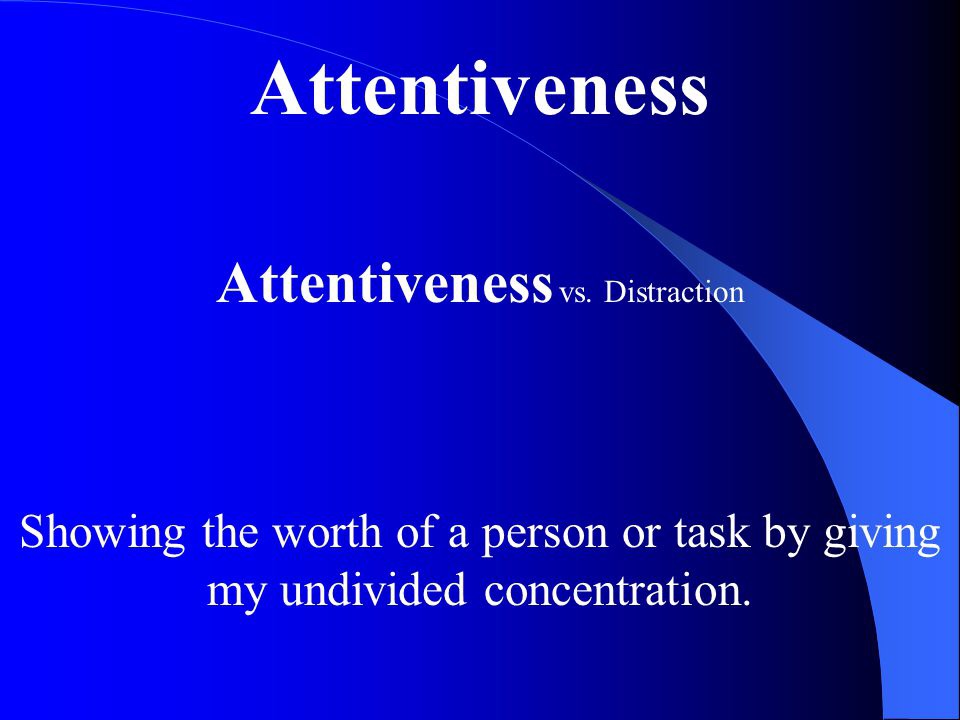
This is where we alll connect. The commonality of our senses’ perception and their comprehension. This is what is meant by ‘realisation’. When we make the world real. When we realise that the truths we know from our senses connect us to the world as intimately as to each other.
These are the materials I use to create art.
But why not get a day job?
I will have to.
I have learned all I can stomach for now about the tangible reality of poverty. I have made some great and tragic friends outside my walls of privilege and comfort. But when I first detected my dwindling resources, I panicked. I borrowed gas money from friends, slept in beachside campsites for free and spent too many days in chic cafes nursing one cup of coffee and a refill just to write, just to connect with the non poverished. I. applied for every job I was qualified for and hustled my books even harder.
But this did not avert my panic and the fear, until it passed of its own. And you already knnow: nothing is ever as bad or as long as we first imagine it to be. That’s when I understood how many of my needs, weren’t needs at all and that I could live without the comforting requisites of a middle class existence, just fine. In some ways better.
Less consumption = less waste.There’s what I want and what I can have and if I diminish my wants, I can have have everything I want.
When you don’t have any money, you don’t spend any money and that initself is a good thing.
The last argument that pursuaded me of the virtue of experiencing this lifestyle is that if I really wanted to write for wider audience in a profound and meaningful way, that I might need to understand and empathize with the truth of our human condition across the entire economic spectrum, not just those who can afford to buy books
And the truth is that the vast majority of “us”do not live a middle class lifestyle and that the majority of “us” struggle every day to earn what is called a living and yet seldom ressembles it.
I have met so many, so many poor people living on the streets in one of the wealthiest cities in the wealthiest state in the union, in the wealthiest nation in the world.
None of us can afford to rest within our illusion of justice and freedom until poverty is no longer the default state of the human condition in America. Remember, poverty is a prison from which escape is difficult. But if we truly want to say that we live in the land of the free, then we must free our citizens from the prison of poverty.They are “us” as well. Not charitable”us”, not pitiful “us”, not lazy, drug taking, alcoholic “us”.
Just us.
I have talked in depth with enough of the so-called “homeless”. to recognize them for who they really are: The Poor. You know, those people Jesus was always talking about and Charles Dickens and Emile Zola wrote about? The idea that those without homes choose to live that way is a bigoted urban myth that need to be quashed.
Yes, may of the poor have real problems with alcohol, drugs and severe mental illness. But so does every other group and class of people I have ever known. The rich and the middle class aren’t exempt from alcohol, drugs and craziness; in fact they can afford more!
How then are we less connected as human beings?
Or is “humaness” only measured by level of income?
When I moved back to California to look after my mother, I was immediately struck by the avalanche of poverty that had engulfed my home town. As is every other foreign visitor to California, by the way. No tour of Balboa Park or visit to Sea World can eradicate the open poverty that everyone can see on the streets of San Diego. Which now more closely ressemble the streets of Port-au-Prince, Haiti or the extreme poverty that can be found in some places in Mexico, than any American city.
The first thing that went was the last vestage of regional or even national pride.
It is a crime against humanity for so rich a city as San Diego to maintain the level of homeless poverty that is evident to anyone who visits us. It is “our” fault. Because we are also connected to the impoverished and the socially weak.
You know, what Jesus was saying.
If I am to write the truth for those who want to read or hear the truth, then I ought to know what is lying outside the walls my middle class habits and worldview. What is it really like, not just for the impoverished but for the vast majority of Californians who also now live beyond the walls of middle class sensibilities, paycheck by paycheck?
Haunted by the memories of its long gone comforts.
What does it mean to be a human being living in America right now, in 2020. Aren’t we all supposed to have jertpacks by now?
What is the Truth of our American selves?
As Tony Morriosn said “The whole point of freedom is to free others”.
To my friends who have offered their support, I thank each one of you.
I will never forget your kindness and your humaness.

Yes I have a new book coming out in the fast approaching Spring.
It’s entitled TAKE A DEEP BREATH, A Book of Remedies and will feature much of the writing and accounts of experiences of truth that I have had living in California these last 5 years.
I hope that you will take a look.
5 Submissions of My Latest Work

Life is Always Replaceable
Being is Becoming Still
Existence is a limitless screen of emptiness,
Insomniac Awareness
The Last Halo of Hope.
Pebbles
Crime Against Our Own Humanity

People have been asking me why I chose the risk of first publishing a book of poetry before publishing my collection of short stories THE VILLAGE OF LIGHT and my first novel, THE PLAGUE. Why launch a writing career on the back of such a neglected and unpopular form of literature?
My first answer has been that as a keen admirer of the actor William Shatner, I wanted to emulate his career; first as a starship captain (in my mind), and second, as a genius of the Art of Spoken Word.
But the non comedic reason is worth explaining here: throughout every major epoch of human achievement and civilization,
reason is worth explaining here: throughout every major epoch of human achievement and civilization,
Poetry has maintained a major position in the spectrum of human arts; true across society, cultures, oceans and centuries.
Until now.
This dawning century of technological, scientific and artistic achievement; this era we currently reside in, is the exception to the human rule.
We have exchanged our ability to appreciate Poetry for other more comfortable and lascivious sensations. We have unlearned the sensibility to immerse ourselves in the healing waters of an art that we, as a species have grown like a medicinal herb in the human garden, to salve the pains in our souls and our minds .
By turning our backs on those warm healing waters we have damaged ourselves. We are all in dire need of rehabilitation.
And that is exactly what Poetry mystically, delivers.
Poetry sets you free, for free!
If you know how to notice and pay attention to the subtler colors in the spectrum of your mind’s cognition.
Which is a Poetic thing to say in that it is both metaphoric and literal at the same time.
Poems allow the mind to synthesize (reconcile), apparent opposites and to understand the deeper resonances of our human experience, in the simplest of terms, arranging words like pebbles on a dry river bank and in the broadest, to enter the harmonic rhapsody of our humanity and its sense of rhythm in this universe.
That rhythm is the breath, which is true to us all who are living. Poetry is the sound of our breathing in this world. If you want to know who a people strange to you are, read their Poetry; the words they have chosen to express themes, that persist for us all: Birth, Death, Love and the swirl of illusions inbetween.
Poetry is a drastic intervention meant to make you better. Not just feel better, but actually see, understand and *be* better than you are, which may feel strange at first.
Only bad poetry is comfortable. Trying to be the best that you are, to overcome ones self, may take more than one lifetime to achieve. But so many Poems offer roadmaps of the soul. Guidebooks from which you can detect what is universal about humanity, about the human subjective experience, and your place in this present.
So that is why I chose to launch my writing career, with my current publisher (Chameleon), with a book of Poetry:
You can order a signed and dedicated copy of my book IS SHE AVAILABLE? directly from PayPal Here
I chose to publish Poetry first specifically because it is the form of literature that has proven to be least popular at the moment, as this marketing study details.
I’ve always stood up for the underdog, be it in life or publishing. I stood up for Comics when they were largely looked down upon as adolescent drivel. I just never thought to myself in all my years on this earth, that I would need to stand up for Poetry, because it had now succumbed to more dominant dogs.
This is a great shame to me, as a reader of great Poets from virtually every culture and time period. I mean with Poetry it really is where all of humanity meets, outside of time and space. The very center of our collective space, where language is. Each one of us is both here and there: at the edge of meaning. The words of the poem are are written by and read by the singular mind that spans all of us to that edge of comprehension. Poetry is the very understanding that we seek, in our selves and in others.
Poetry is the very understanding that we seek, in our selves and in others.
It is passive crime against our own humanity to let this art subside, due to laziness, neglect and superficiality.
So do your soul a favour and read a poem. Not just mine, any poem will do. Any Poem will set you free, for free; or at least at the modest cost of your attention.
In My (always) Humble Opinion, ofcourse.
Breathing Time

I am not a connection.
I am a conjugation of every verb you have ever uttered,
Before the action you took, just now.
Hidden and mistaken
Slipping between your shadows,
Your ideas,
And a Reality that long ago,
Left you way behind:
The moment you thought you were in.
I am not your connection,
I am your conjugation, So
Stop spitting out your words
And start breathing in time.
INSOMNIAC AWARENESS by Igor Goldkind

We who are hiding in our second bedrooms,
Licking the silver from the backs of our screen,
Are living in a differently timed zone
Of insomniac awareness.
Sometimes 2, sometimes 3, sometimes 4 or more
Lives are lived and lost each night.
In our rooms, by ourselves
Sitting too close to the edge of our beds.
This is our legacy
The lasting perpetuity of our sensory species:
The glow that contests the light that once shone from our eyes,
Right up to the razor’s edge of our understanding of
What is not yet known.
The un-utterable.
What can barely be thought , much less said and
Yet still dances these words so merrily across this page.
In the ballet of silence that surrounds them.
Who are you reading this?
What perturbs your eternal sleep-walk into the night?
Are there questions you are pondering?
Or are you merely waiting for the screen to pull through for you?
Into your own quiet, private world,
Where things that count never change.
And no one is dreaming you, but your mother
Who has left you now for another child.
Who has left you now for another child.
RESURRECTION

I am the Resurrection.
Every morning I drag myself from my bed.
Rolling away the heavy sheet I wrapped around myself
for comfort,
All night long.
Jesus, where’s the fucking coffee-filter?
Jesus, you don’t have the muscle anymore
that it takes,
To roll the weight I’ve been rolling away, every day
From the mouth of my cave.
Here we are again . . .
Awake, but blurry-eyed,
Look at the lives we’ve each brought back from the dead:
From the cave of shadows,
From the dancing on the walls.
Fire animates the walls
(There is fire is in the whole).
But the bad impersonation of the sun
These dancing flames assume
Leave me adrift.
Floating in a sea of my own shortcomings.
Who are you, reading this?
And who do you suspect this voice to to be ?
You and I?
We are just meeting here by chance.
Somewhere outside of time
Somewhere in these words.
Somewhere near the entrance
Of this cave that each of us,
So gradually emerges from.
YES, I AM AVAILABLE . . . . . . for a price . . . .

OK, you can buy it now.
My book that is, the one I have been going on and on about on these pages for the past 9 months.
It took awhile, a little longer than I planned on.
But it’s here now: SHE IS NOW AVAILABLE!
My apologies to everyone I have kept waiting, but I think you’ll find that the end result was well worth it.
You really haven’t seen anything like this before.
Somewhat in recompense, my publisher is offering a SPECIAL INTERNET OFFER to my FB and blog followers:
As of tomorrow, you’ll be invited to pre-order the 164, fully illustrated Hard Cover Edition designed by Rian Hughes featuring an original cover by Bill Sienkiewicz for the regular price of $24.99 and
Get the eBook Download RIGHT NOW FOR FREE.
This offer starts tomorrow for a limited time only. The hardcover edition ships this month and will be available in May. This is your chance to get a copy before your friends can steal theirs from the library, for a LIMITED TIME ONLY.
This is a book of Poetry and a book handcrafted by love, tears and the visions of 27 artists, musicians and animators.
Poems are a way to talk to a side of ourselves we cannot talk to and a way to take pictures of things that we cannot take pictures of. But like a picture, it also holds moments in time. It works in the space between words, where connections are made, meaning is formed and the poem is ultimately owned by the reader.
And still, for so many of us, you only notice poetry when you need it.
Read poetry.
Because while all the poetry in the world might not be worth as much as one good doctor, if there is a reason we are alive, if there is a reason we’re here, it can be found in poetry. It is the barest bones of the human experience and it captures the soul in flight.
Kind Regards, and please may I ask that you share my words with your Friends.
THE FOOL’S LAUNCH PAD

The book is finally ready.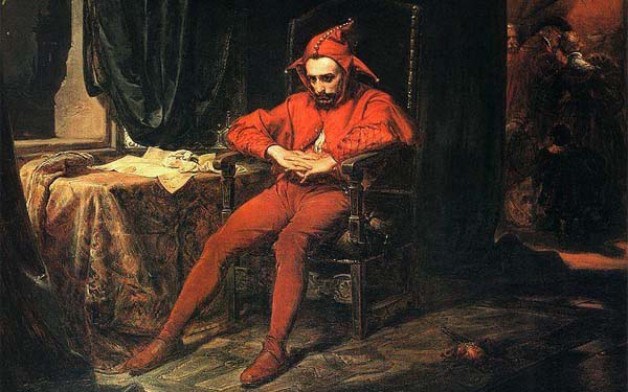 I’ve seen it, played it, read it, listened to it so many times it’s near driven me mad.
I’ve seen it, played it, read it, listened to it so many times it’s near driven me mad.
The act of creation is an explosion, a maelstrom of emotional energies seeking form, vying with their own legacy of fragile structures, to Break Through to Something New.
That is the goal.
But the monotony of honing the perfection; wherein the hot metals cool and adhere to the cast, is the labour that seems unending compared to that first ejaculate of inspiration.
So we toil as we complain.
But there never really ever was any turning back
And now there’s no looking back, because the book is uploaded and now for sale on in iTunes, the Books Online Directory and the publisher’s own site: Is She Available?
If you’re reading this, you can get a special discount offer on the website; a kind of 2-4-1 deal. The kind of incentive that is supposed to get you to read my stuff.
The official release is Wednesday, APRIL FOOL’S DAY, which I consider entirely appropriate. A day like any other day, displaced by a change in calendar; a recalibration of our instruments that measure time makes fools of us all when we forget what the calendar really measures: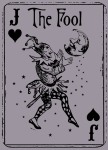
our own steep descent in running out of time.
So like you, I am a Fool
I took the opportunity to be published and turned it into something more; something different, something that I felt should have been tried by now. But it hadn’t been.
So I did.
Try.
Doing something new.
Whilst the machinations of publishing both print and online, grind into gear, releasing steam and a rumbling thunder, I prepare for my flight from the north to the south.
I will be in the air when this book lifts off from its pad.
I hope it flies.
I hope it flies high enough to break this orbit.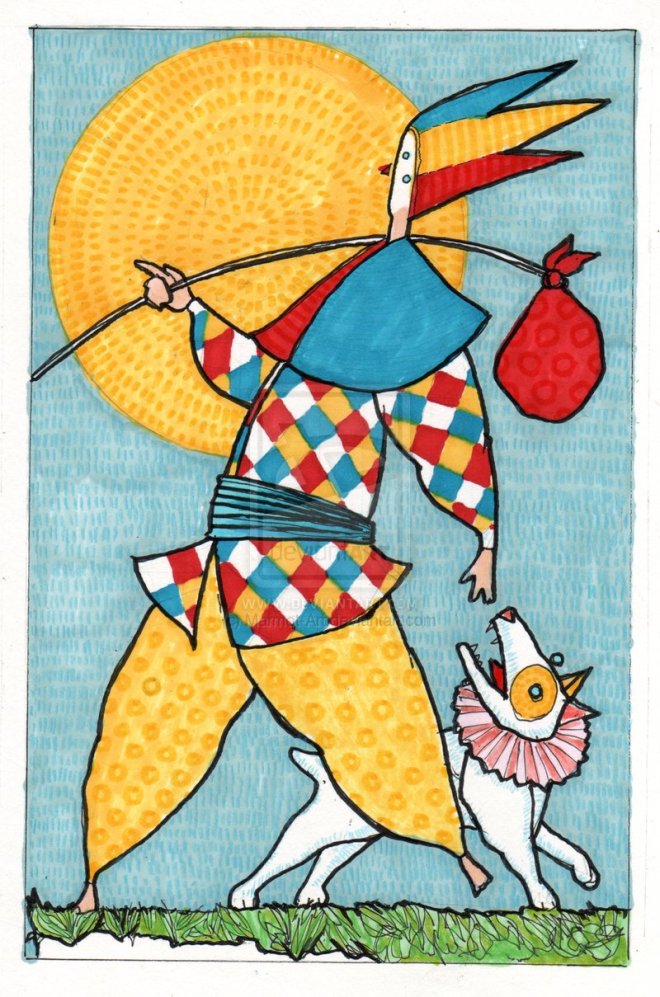
With your help, it very well may.
Thanks, Igor
DEATH PROTECTS US ALL

Death protects us from burning in the Sun
Light that surrounds our momentum,
Or from drowning, faces upturned in the rain.
Decades like minutes whip us by.
But Death will protect us from the sting in the wind,
She’ll huddle us close in the folds of her midnight dress.
And when it’s time to go; 12 bells the toll,
She’ll insure that all her children are aligned and tenderly accounted for.
YES, SHE IS AVAILABLE! OUT NOW !!!!! How Exciting.

I am posting this to announce the official publishing of my book IS SHE AVAILABLE? On April 1st, 2015. the ebook will be available for download on a variety of commercial websites; not least of which is the official website http://is-she-available.com where you will be able to both download the book and pre-order the hardcover edition.
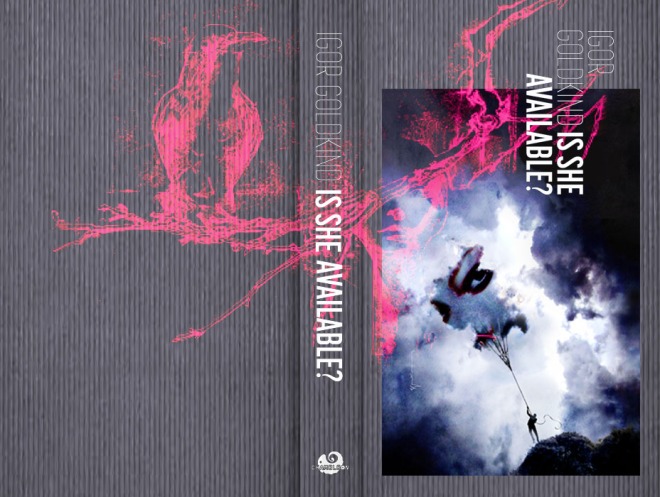
Cover Illustrations by Bill Sienkiewicz; Design by Rian Hughes
Please, tell your Friends.
“Friends”: how strange that word now seems to me given the dilation of its meaning over the past what 5, 10 years? I recall using the word in reference to a small circle of familiar intimacies; varied in nature and personality but common in values and how we choose to pass our time.
Of course now my Facebook tally shows that I have somewhere near 2,000 such Friends, comprised mainly of people I have never met, with whom I have exchanged a few words at best; and yet in that exchange of Words, have widened the circle of that meaning: Friendship.
Which is why I have come to not so much to write poetry (I started when I was 13), as to publish it. In a form that suits it’s purpose: to reach out to as many people as I can, the Friends of my Friends (and their Friends too), through the channels that will reach them across this sea of data, signs and meanings our attention now spans.
But even the word ‘book’ now seems to have acquired a fluidity of meaning that transcends its original reference. My work is a tangible, page-turning book designed by maestro Rian Hughes; an electronic book with music and animation, a CD of 15 music tracks by the musical enfant adorable Gilad Atzmon; a portfolio of art prints and a selection of Poet-T-Shirts, bearing a selection of fine art images and illustrations from my dozen collaborators on this book.
This ‘Book’ is also a live spoken word/jazz music tour in the US this coming this early summer and a UK tour this Autumn.
I apologise to my Friends who have been hanging on, hearing fragments of news, awaiting the date they can hear less about it and more what it says. I confess, like many things,
it was all my fault.
The inception of this project dates back nearly a year to March 2014, when the author/publisher Amy Sterling, after a long dialogue about writing on Facebook, suggested that her nascent publishing company CHAMELEON Publishing Inc. would be interested in publishing my work. Chameleon Publishing Inc. was a new, next-generation publishing company based in Southern California that’s opening new market channels for books with new readers, mainly for and about women. When I first mentioned my sole discrepancy in this area, Amy replied casually with the second greatest compliment a woman has ever paid me: “But your sensibility fits”.
And I’m thankful that it has, because without the efforts of the women who have supported this project, it would not have come to be. From Eleanor Brooks my firm, caring editor, to my daughter Olivia Goldkind-Brooks, to Addie Kaplan my business manager, this vehicle is powered by a uniquely feminine drive. Since the start gun fired, I have been on an unimaginable roller coaster ride of magical serendipity, dazzling disappointments and a severe lack of funds. Don’t let anyone ever tell you that the career of a writer or any artist is easy; sure you have more freedom, but freedom costs what money can’t buy: time, effort and persistence.
I had hoped to announce the publication before Christmas, then the New Year. But the practical demands and hurdles involved in this kind of innovation and creation (thank you, Adobe!), persists with its own priorities, own issues to resolve. I also encumbered myself with the urgency of my mother’s impending demise late last year. I had to unburden myself of the notion that I needed to place a copy of my book in her hand before she passed. It wasn’t practical it wasn’t possible and in the end, it wasn’t necessary.
The personal is always constrained by the impersonal.
Now we are resolved.
My persistence on this project, (some would add, against all reason), is about to see fruit. Whether the fruit is sweet or bitter (or both) will soon be for others to determine. What I can tell you is that I have put all of myself into this this deeply confessional, personal work. All of my sweat, all of my anger, all of my love, all of my hatred, all of my blood, sinew and bone into the making of this creation. My intent is to connect with you, with your emotions, your experiences and your sense of your self by sharing the most personal in the most universal way I can. I believe, at the depth of our selves, in our own most solitary, private existences is where we find each other gathered, maybe huddled, in the same exact corner.
It will not be to everyone’s tastes, I’m sure. But if you care to take a look you will find a work that endeavors not to entertain, nor offer safe refuge from harsh truths; but rather to be that truth in Word, in Image, in Music and in Movement.
Because . . .
When you stare into the Abyss long enough,
the abyss will stare back at you;
and if your gaze remains unflinching,
the Abyss will speak to you
And this is what it says . . .
The Crashing Wave

deeper than your heart can beat.
deeper than your soul can breath.
dive dive dive.
down deep beneath the swell;
deep beneath your feeble gasp.
dive before your heart is crushed
in the curled fist of the crashing wave.
LOVE IS AN ANGEL DISGUISED AS LUST by Igor Goldkind

LOVE IS AN ANGEL DISGUISED AS LUST
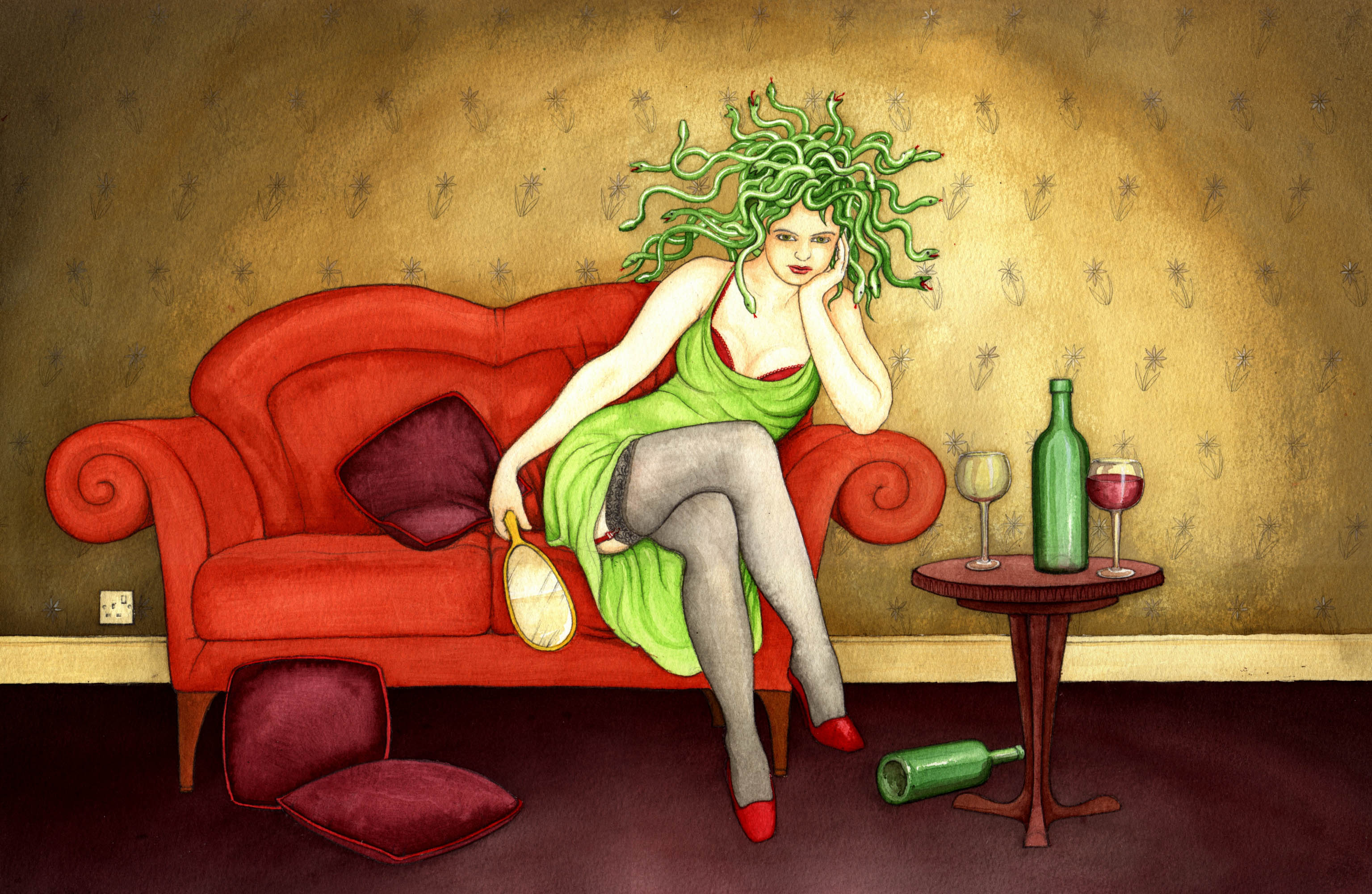 What is this thing that you can’t speak of?
What is this thing that you can’t speak of?
This flirtation that will not hold its tongue but would rather hold yours between its teeth
And bite the thwarted anticipation of your mad fear’s confusion.
for fuck’s sake, what’s to choose?
Your body has already chosen for you
I hear it calling me on the telephone it anticipates my touch
it intakes your breath
it recalls my lips onto yours this tongue wets a damp crevice and summons the river
and it flows like no other desire from phone to train to bedroom
a churning current that carves out cliffs on the shoreline on the way plowing across the months and years exposing the bone and sinew of yes,
pure lust
DESIRE!
Pure Beautiful Carnal Longing
that is the truthful stench of black damp earth pregnant with all of life; pregnant with who you and I will become
when One again.
When turning and churning, unraveling and raveling the bed sheets again.
The furious spinning of uplift resisting all gravity.
There’s a vertigo to our desire but no, I will not let you fall.
Recall, hear my cries of consummation in your arms, rising and falling, dancing between your upturned thighs
Recall your gasps of surprised delight
As the wings of a fallen angel unfurl to take in the return to paradise. You can feel this all again with me, baby.
There ever, ever was another . I’m just waiting to take you again.
. I’m just waiting to take you again.
Paintings of Medusa by Nancy Farmer © 2014 for the Poem in the collection IS SHE AVAILABLE? (Chameleon)
PLATO’S RETREAT by Igor Goldkind; Illustration by Rian Hughes

I want to be just like Socrates,
Grow a long beard and
Do what I please.
And be asking you allot of questions….
For a living.
I want to be just like Socrates
And not know for sure If I’m really real
or merely an altar In Plato’s temple.
I want to be just like Socrates,
And stand in the forum all day.
In the blazing sun that surrounds us,
Under the azure Athenian skies.
And philosophize,
To anyone who bothers to listen….
For a living.
I want to be just like Socrates
Corrupting my own youth in a hemlock cocktail
Every Friday night, 2, 4 1 before 7 ….
For a living.
I want to be just like Socrates,
On a Saturday night …
Asking, “hey you, at the bar”:
What is justice?
And where can I score some tonight?
After hours ..
Long after the widening sliver
Of your mind’s eternal dawn.
THE WHEELS OF HATE by I. Goldkind (illustration by Mario Torero, muralist, teacher, poet)

- The Wheels of Hate
- The Wheels of the Bus go round and round, round and round, round and round
- The Wheels of the Bus go round and round, all day long.
- The Wheels of Hate go round and round, round and round, round and round
- The Wheels of Hate go round and round all day long.
- The Wheels of Hate put niggers in the back of the bus, niggers in back of the bus,
- Niggers in back of the bus!
- The Wheels of Hate put the niggers in the back of the bus
- Until we said: No Fucking More!
- The Wheels of Hate go round and round, round and round, round and round
- The Wheels of Hate go round and round all fucking day.
- The wheels of the hate touched up the woman, touched up your woman, touched up our women
- The Wheels of Hate touched up all women until they said: NO MORE, YOU DICKS!
- The Wheels of Hate exploited the Latino, exploited the Latino, exploited the Latino
- The Wheels of Hate exploited the Latino until we made the union strong.
- The Wheels of Hate burnt all the Jews, burnt all the Jews, burnt all the Jews
- The Wheels of Hate burnt all the Jews and now burn the skins of the schoolchildren of Gaza.
- Those same Wheels. . .
- Ohhh, the Wheels of Hate dug all the Killing Fields, dug the Killing Fields, dug the Killing Fields
- The Wheels of Hate dug the Killing Fields until there was nobody left to kill.
- The Wheels of Hate beat the Muslim woman, beat the Muslim woman, beat the Muslim woman
- The Wheels of Hate beat the Muslim woman because she covered her face.
- Yes, the Wheels of Hate took me for a fool, took me for a fool, took me for a fool.
- The Wheels of Hate took me for a fool until I said:
- Enough is Enough!
- The Wheels of Hate make us all hate each other, all hate each other, all hate each other.
- The Wheels of Hate make us all suspect each other because this way we are easier to rule.
- The Wheels of Hate go round and round, round and round, round and round.
- The Wheels of Hate go round and round until we make them . . .
- STOP!

IS SHE AVAILABLE..? by Igor Goldkind A Collection of Poetry, Art, Music and Motion in eBook, Hardcover and CD Spoken Word Editions COMING FOR THIS XMAS!!!

THIS IS THE HOLDING PAGE FOR THE OFFICIAL IS-SHE-AVAILABLE.COM WEB-HUB LAUNCHING DECEMBER 6, 2014
On this page you will be able to order the book directly in time for Xmas; Download the eBook; pre-order the Wall Print Portfolio and the Music CD IS SHE?
BOOK MARK THIS PAGE AND GET SPECIAL DISCOUNTS FOR BLOG-FOLLOWERS AND FACEBOOK FANS
CHECK OUT SAMPLE FROM THE EBOOK AT MADEFIRE.COM HERE
THIS IS THE COVER ILLUSTRATION FOR THE BOOK AND THE POEM THE DARK CLOUD
am
the
Darkness.
I
am
the
Darkness.
I
am
Oblivion.
I
am
the
of
Meaning,
Which
is
Nothing!
I
am
contempt
incarnate
I
am
the
self-loathing,
the
wriggling,
The
squirming
of
your
soul
I
am
the
reason
you
are
suffering
Because
enjoy
the
show.
I
am
the
Darkness.
I
am
the
Darkness.
I
am
Oblivion.
I
am
the
Meaning
of
Meaning,
Which
is
Nothing!
I
am
the
dropped
eyes
and
fallen
smile
of
your
mother
When
she
realizes
what
a
little,
masturbating
shit
you
really
I
am
sickness.
I
am
despair.
I
am
the
hope
you
hide
behind,
Strangled in thin air.
I am
the
Darkness.
I am
the Darkness.
I am
Oblivion.
I am
the Meaning
of
Meaning,
Which is
Nothing!
You
are
the
particle,
I
am
the physics
You think
you matter?
I Am the Matter,
Dark Matter!
I
am
where
all
energy
goes.
Entropy is my mistress
and
I fuck her every day!
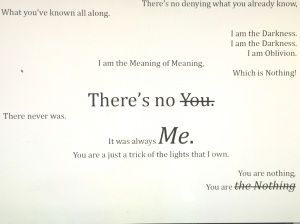
I
am
Where
you
come
from
Where
everything
comes
from…
I am what comes to you all.
I
am
where
you
go
when
you
don’t
really
know,
When
you
can’t
recall
Who you are anymore.
I am the Darkness.
I am the Darkness.
I am Oblivion.
I am the Meaning of meaning,
Which is Nothing!
Stop
talking
now.
Stop
thinking
now.
Stop loving and living and dying.
Come with me now.
Come with me now.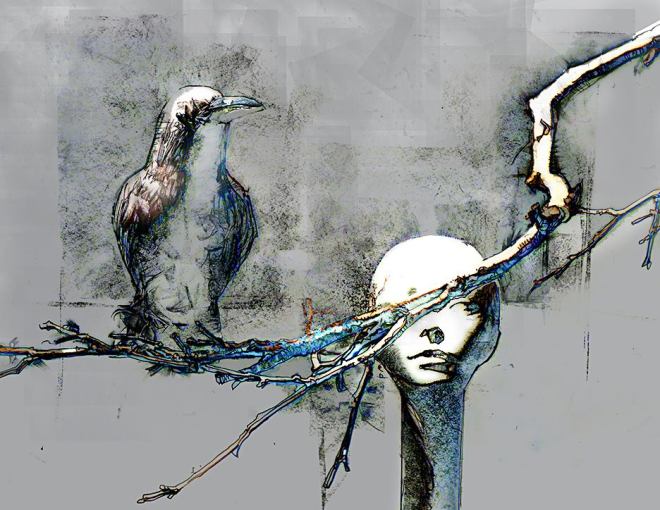
Come with me now.
There’s
no
denying
what
you
already
know,
What you’ve known all along.
I am the Darkness.
I am the Darkness.
I am Oblivion.
I am the Meaning of Meaning,
Which is Nothing!
There’s
no
You.
There never was.
It was always
Me.
lights that
I own.
You are nothing,
You are the
Nothing
You are me
You belong to
ME.
Now come quietly now,
Come take my hand, now.
Out of the darkness,
Out of the darkness,
Out of the darkness,
Out of the darkness,
Where you belonged.
Out of oblivion,
Out of the Meaning of Meaning,
Out of the darkness,
into your Light
SHE’S COMING . . . HE’S WAITING . . .

IS SHE AVAILABLE?…………………………………………………………………………………Even the Truth is For Sale
HE’S WAITING . . .
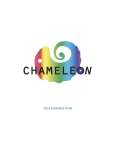 The New Debut Collection of Poetry, Illustration, Music and Animation
The New Debut Collection of Poetry, Illustration, Music and Animation
by Igor Goldkind and 20 other Artists
COMING THIS XMAS TO AN AMAZON TAB NEAR YOU
This Christmas Make Your Gift Poetry.
THE LINE YOU WALKED for my father Victor H. Goldkind

Copyright 2014: Words: Igor Goldkind; Music and Arrangment: Gilad Atzmon; Sculpture: Martin Smith All Moral Rights asserted in this work and its contents are not to be reproduced in any form without written consent of all 3 parties listed above. This work is a preview from the poetry collection IS SHE AVAILABLE? written by Igor Goldkind, Music Composed and Arranged by Gilad Atzmon with a variety of illustrators from the worlds of Comics, SF and Fantasy contribute including (not from that world, but from the Art World), the sculptor Martin Smith. All rights protected and Copyright on all creative assets will be strictly enforced. Art will set you free.
The Sedition of Words

There is a sign post on the cross roads I’m standing at.
This is a pause in transitions.
A lingering in the corridor before turning the handle of a door with a strangely morphing symbol on it.
A sharp intake of breath, a quick check of watch, phone, keys and I step forward, across a threshold into an empty room
Change is a process, a movement of energy and matter from familiar shapes to less familiar ones that gradually regain familiarity. Things go out (of focus) and then come back in (to focus).
Events are the signposts I use to orient my position within the transition.
When you’re hiking in the woods, you look up at the patterns of the tree leaves; at night you use the stars as a compass and in cities day or night, there are street signs, Googlemaps and the answers to questions you ask strangers.
The events I know are first, we have successfully launched the new website for SUBVERSIONfactory, the portfolio of digital arts projects I’ve been carrying around from office to office, down dark corridors into gaping boardrooms and secret smoking whiskey bars.  It’s now a transparent incubator of eggs under glass. Possibly alien. Possibly earthborn. Where visitors can watch chickens being born, pecking their way out of their perfect oval containers, spitting fragments; where visitors can witness the slow progress of development, like clock hands or sands escaping an hour glass, as we add layers on layers of assets, and chocolate frostings and conjure flesh out of concepts, collectively having orgiastic brainstorms while welcoming new shipmates along for the ride.
It’s now a transparent incubator of eggs under glass. Possibly alien. Possibly earthborn. Where visitors can watch chickens being born, pecking their way out of their perfect oval containers, spitting fragments; where visitors can witness the slow progress of development, like clock hands or sands escaping an hour glass, as we add layers on layers of assets, and chocolate frostings and conjure flesh out of concepts, collectively having orgiastic brainstorms while welcoming new shipmates along for the ride.
We are also openly and candidly asking for help, for financial sponsorship from our supporters who can see the raw value of what we are trying to do and would like us to carry on creating, producing, subverting. By paying-forwards for projects, our sponsors receive not only a copy of the work upon completion but become collaborators in its development.
Now is the time for direct distribution, where our audience are our co-producers.
We are mainly asking for your sponsorship to fund the next stage of each projects development; mainly consisting of a working prototype.
Come and take a look and express your interest with your sponsorship.
There are many other transitions.
Tomorrow I take a plane to California with my daughter.
I will be flying to San Diego to the rehabilitation facility at Pacific Regents rehabilitation facility where my mother is recovering from surgery. Born on September 28th, 1919 she’s the first artist I ever knew; the first woman I ever met; the first person I’ve ever known. Born in San Jose, Costa Rica, at age 20 she won her country’s national award for painting, which consisted of an all expenses paid 3 month tour of post world II European art centres in Italy, France and Spain. In Spain, she attended the student workshop of resident artist Salvador Dali. She took in the Paris art scene and upon her return, joined her older brother the sculptor Francisco Zuniga, in Mexico City where he was literally carving out a living working for the state casting national monuments.
rehabilitation facility where my mother is recovering from surgery. Born on September 28th, 1919 she’s the first artist I ever knew; the first woman I ever met; the first person I’ve ever known. Born in San Jose, Costa Rica, at age 20 she won her country’s national award for painting, which consisted of an all expenses paid 3 month tour of post world II European art centres in Italy, France and Spain. In Spain, she attended the student workshop of resident artist Salvador Dali. She took in the Paris art scene and upon her return, joined her older brother the sculptor Francisco Zuniga, in Mexico City where he was literally carving out a living working for the state casting national monuments. It was an exciting time to be in Mexico City where my uncle, Diego Rivera, Frida Kahlo, Tamayo and others were busy reinventing Latin American art in the bright tropical light of indigenous magical realism; while down the road in Cuernivaca Che and Fidel were drinking rumand planning the Cuban revolution.
It was an exciting time to be in Mexico City where my uncle, Diego Rivera, Frida Kahlo, Tamayo and others were busy reinventing Latin American art in the bright tropical light of indigenous magical realism; while down the road in Cuernivaca Che and Fidel were drinking rumand planning the Cuban revolution.
It was a time of militant politics running headlong into radical art.
There was music in the cafes at night and revolution in the air.
A time I could always almost taste on the tip of my tongue.
My mother eventually returned to Costa Rica to continue her painting career where she met my father, an anthropology graduate student researching his pHd in contemporary Mayan culture. He met her at an art gallery where she was exhibiting and tried to impress her with his naive commentary on the artist’s work, not knowing to whom he was speaking. My father’s Spanish was acquired from his work in rural indigenous villages in both Chiapas and Costa Rica, a Spanish considered coarse and vulgar by the European smitten Costa Ricans.
But my mother took pity on my father and tried to teach him to improve his Spanish before meeting her father, a mason and a sculptor of religious figures for churches and tombstones. When I visited his workshop as a boy, I recall the shelves and shelves of busts of Kennedy; as if the trophies of some tribe of Presidential head hunters.
My mother was diagnosed with advanced dementia last year as a result of Alzeimers.
I flew to see her last year to try and arrange her assistance at least in house and she promptly called the police to have me arrested. She insisted to the police when they did arrive that I was an imposter. “He doesn’t even live in this country”, she kept repeating to them. This year her friend who had been looking after her fell and lapsed into a coma. So I have been managing her condition remotely with the help of Coronado Elderly Homecare.
She was admitted for surgery 2 weeks ago and the young ortheopedic surgeon who telephoned me before wheeling her into the theatre (why do they call it theatre; becuse there are curtains?), explained to me soberly what her odds of surviving surgery were. But she went with the odds and is now recovering. My phone conversations with her have been frequent of late, however I am visiting her at different points of time in her life.
This has begun to make me understand that life is not made up of a linear narrative; a sequence of A, B and ending in C. Rather we are comprised of constellations of events, peak intensities of experiences that have formed the core, the shape, the consistency of who we see when we look in the mirror. It is the cluster of our intensities that tell us who we are; not age or time frame but the vertical imprints of Being. Sometimes she thinks I am away at college, others that she’s flying to see me.
I am flying with my daughter tomorrow so that she can say goodbye to my mother.
I will stay with her for as long as she needs me.
In the meantime, I will be taking my daughter north to Berkeley so that she can spend an American Halloween with her cousins, my young sister’s children.
On Halloween day I will be dropping in on an old, mad acquantance Liam Sharp at the new Madefire headquarters.
Apart from catching up, we hope to advance the development of graphic narratives taken from our project The Village of Lights on the Madefire Motion Books platform. More news about this when it happens!
When I return to San Diego after Halloween, my daughter will be flying back to England on her own to go back to school. I never believed I would ever say that my daughter could be flying anywhere on her own, but she’s a mature 14 year old now and with the passage of time comes growth in equal measure to decay.
I will be setting up to work from California for the unforeseeable future. San Diego for as long as my mother is alive but also LA and San Francisco, and New York the City of Lights that spear the sky.
I look forwards to be working on some projects with Mike Towry of the San Diego Comics Festival that involve some creative artists and writers as well as furthering development on the SUBVERSIONfactory portfolio. I am also going to be puttng my 15+ years of IT experience to work on offering some European finesse to some American technology projects.
I am also looking forward to working with San Diego State University in furthering my longer term objectives of advancing learning through the arts of story-telling, art and technology; as well as the UCSD based Arthur C. Clarke Centre for Human Imagination. 
I will continue posting more personal and professional information on this blog on my re-entry into California, the progress of the SUBVERSIONfactory, my work with the San Diego Comics Festival and my new focus on revisiting producing my own work that bridges art, storytelling and technology.
Stay in tune.




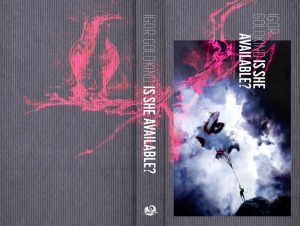



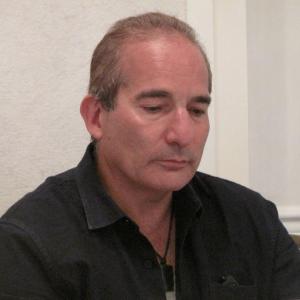
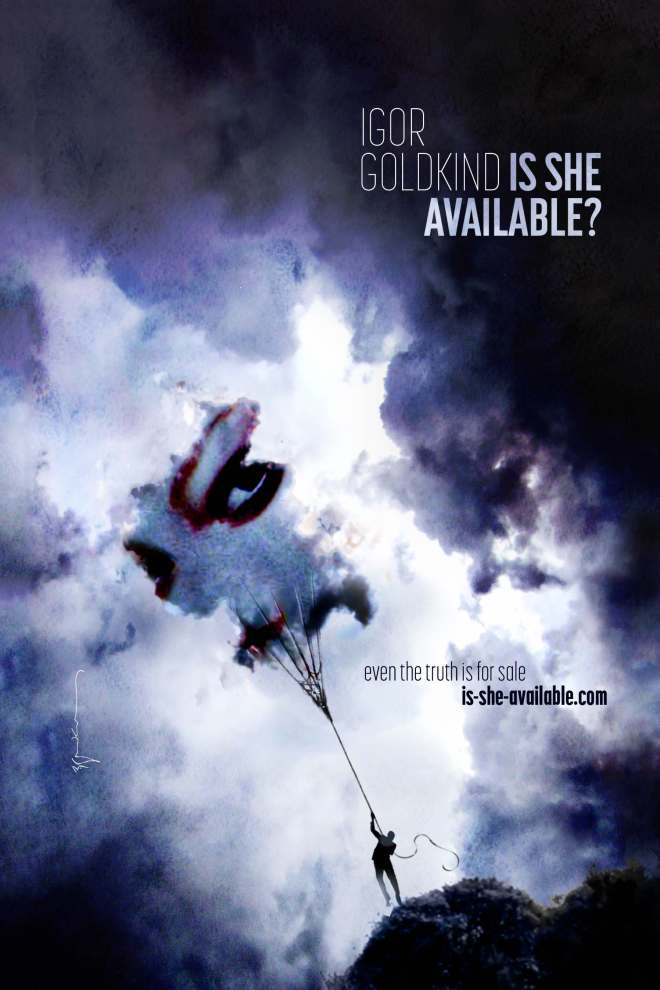

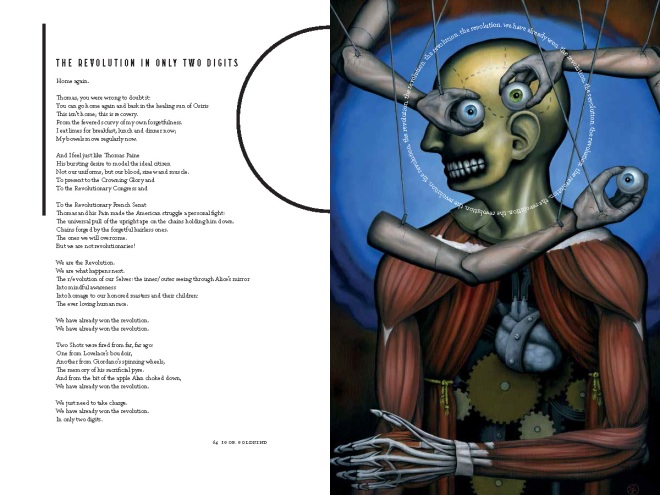

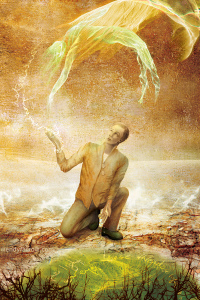
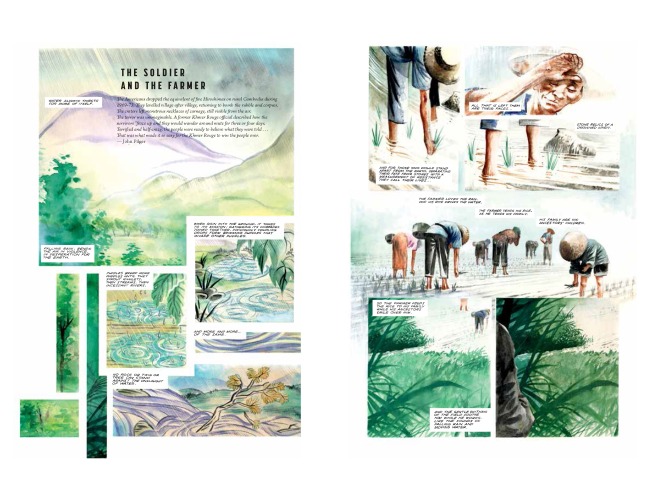
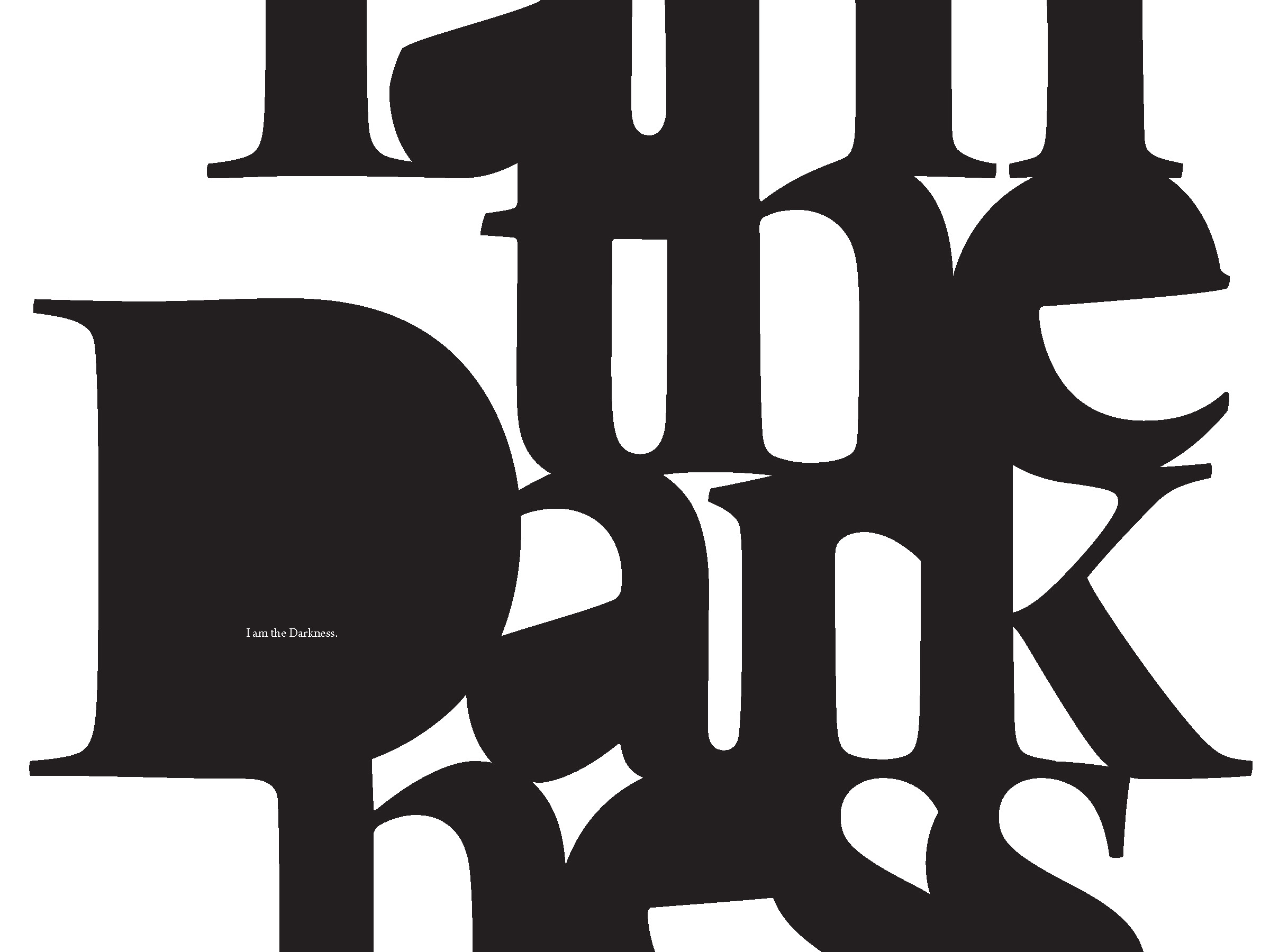



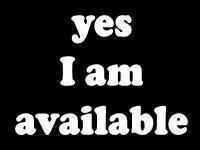

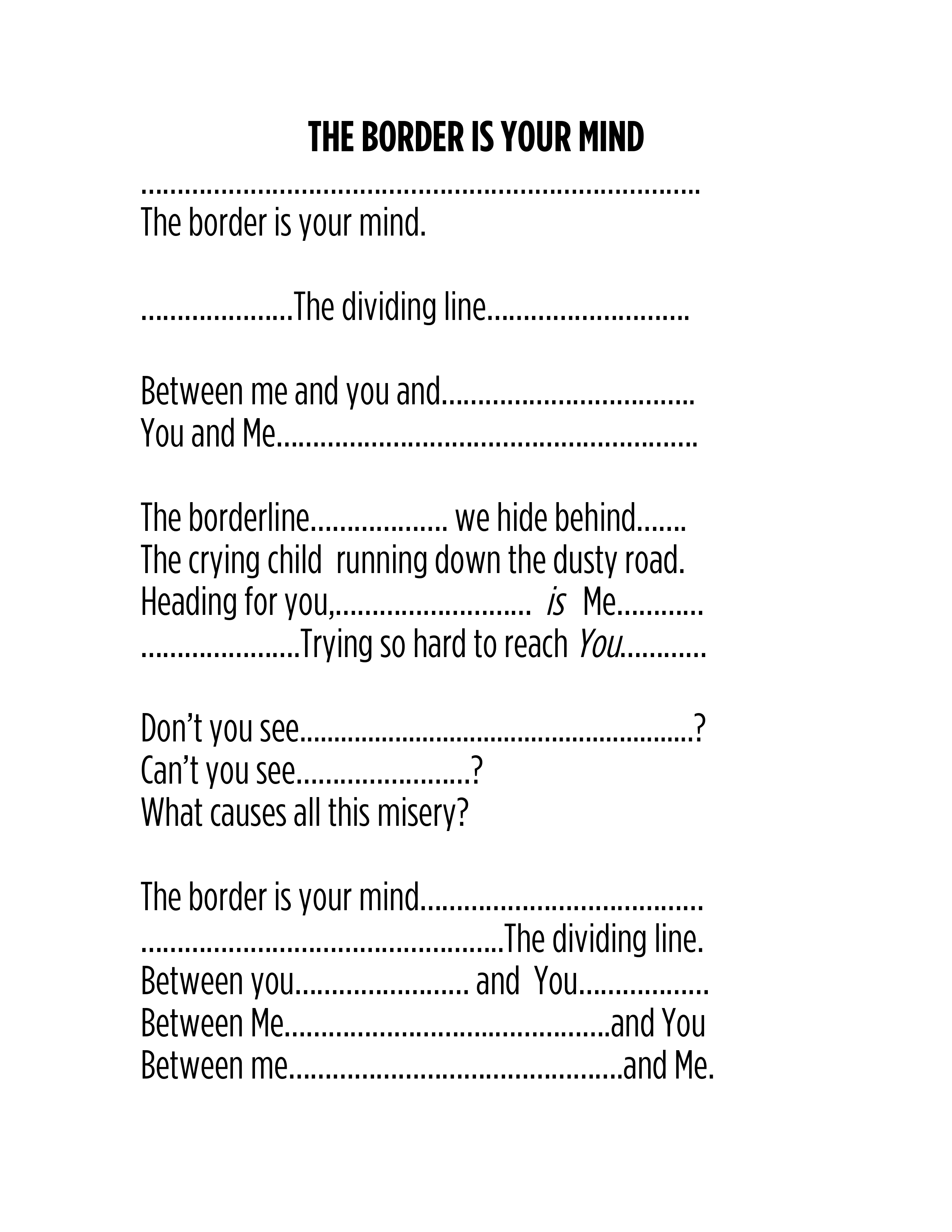
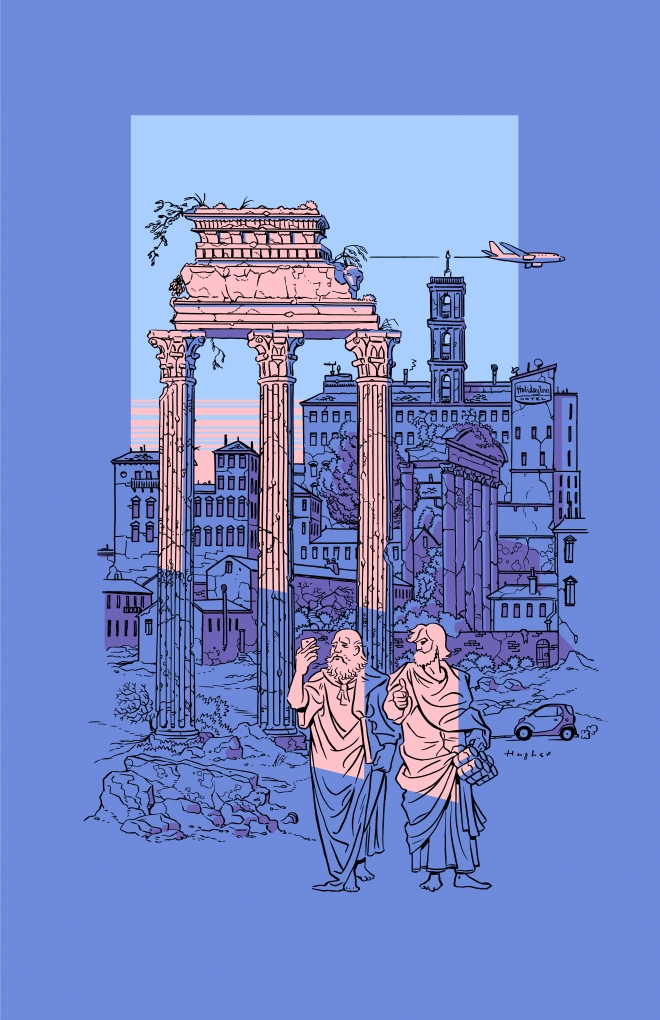


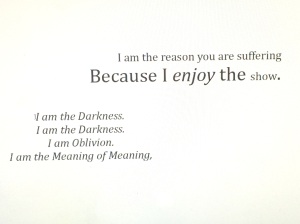
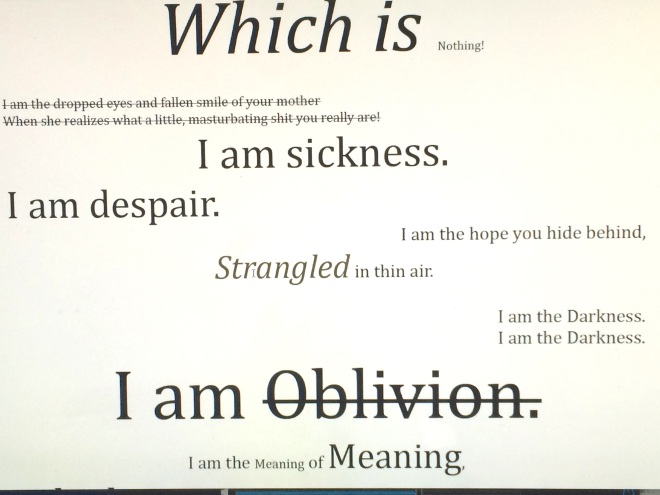
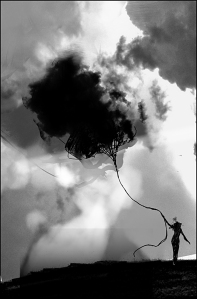
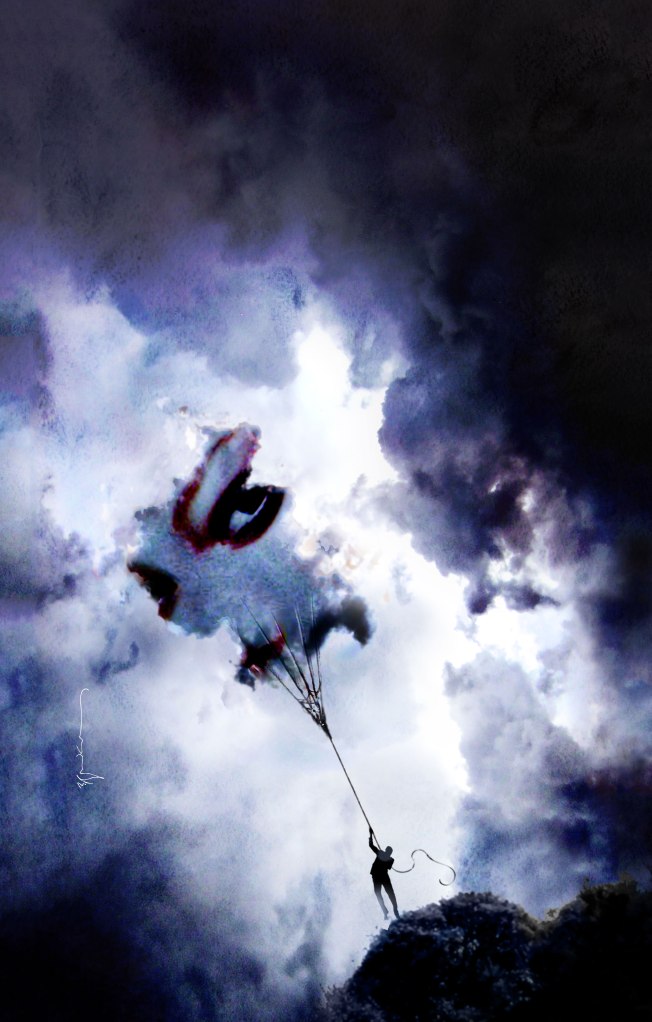








Poetry Therapy: Towards an Uncommon Sense
A Brief History of Poetry Therapy
From the collection of poetry, philosophy and art TAKE A DEEP BREATH: Living With Uncertainty
by Igor Goldkind (Chameleon Publishing, 2021)
Poetry Therapy, or poetry which is used for healing and personal growth, can be traced back to primitive Man, who used religious rites in which shamans and witchdoctors chanted poetry for the well-being of the tribe or individual. It is documented that as far back as the fourth millennium B.C.E. in ancient Egypt, words were written on papyrus and then dissolved into a solution so that they could be physically ingested by the patient and take effect as quickly as possible.
The first poetry therapist of historic record was a Roman physician by the name of Soranus in the first century A.D., who prescribed tragedy for his manic patients and comedy for those who were depressed. It is not surprising that Apollo is the god of poetry as well as medicine, since medicine and the arts were historically entwined. For many centuries the link between poetry and medicine remained obscure. The poet John Milton wrote in 1671:
“Apt words have power to swage The tumours of a troubled mind And are as balm to festered wounds.” Pennsylvania Hospital, founded in 1751 by Benjamin Franklin and the first in the United States, employed many ancillary treatments for their mental patients, including reading, writing and the publishing of their work. Dr. Benjamin Rush, called the ‘Father of American Psychiatry’, introduced music and literature. The writing of poems was was encouraged, and the results were published in The Illuminator, their own newspaper.
On the battlefields of the American Civil War, Union field medic Walt Whitman would administer recitations of verse to fallen soldiers who were well beyond hope long before the use of morphine. He was later to pen the classic Leaves of Grass, the greatest celebration of humanity in the midst of its own despair. Pennsylvania Hospital employed this approach as early as the mid- 1700s.
In the early 1800s, Dr. Benjamin Rush also introduced poetry as a form of therapy to those being treated. In 1928, Eli Greifer, an inspired poet who was a lawyer and pharmacist by profession, began a campaign to show that a poem’s didactic message has healing power. He began offering poems to people as prescriptions, and eventually started “poem-therapy” groups at two hospitals with the support of psychiatrists Dr. Jack L. Leedy and Dr. Sam Spector. After Griefer’s death, Leedy and others continued to incorporate poetry into the therapeutic group process, eventually coming together to form the Association for Poetry Therapy (APT) in 1969.
Librarians also played a major role in the development of this therapeutic approach. Arleen Hynes was a hospital librarian who began reading stories and poems aloud, thus facilitating discussions on the material and its relevance to each individual in order to better reach out to those being treated and encourage healing. She eventually developed a training program for those interested in teaching poetry therapy.
In 1980, all the leaders in the field were invited to a meeting to formalize guidelines for training and certification. At that meeting, the National Association for Poetry Therapy (NAPT) was founded. As interest grew, books and articles were published to guide practitioners in the practice. Hynes and Mary Hynes-Berry co-authored the 1986 publication Bibliotherapy — The Interactive Process: A Handbook. More recently, Nicholas Mazza outlined a model for effective 188 poetry therapy, also discussing its clinical application, in Poetry Therapy: 189 Theory and Practice.
The Journal of Poetry Therapy, established in 1987 by the NAPT, remains the most comprehensive source of information on current theory, practice, and research. There is also a relationship between psychological healing and incantations, either repeated as a musical chant by the patient or recited by the attending medicine man. Of course, modern medicine and science consider the notion of magical incantations possessing healing or restorative powers as so much superstition.
But this, of course, begs the question that if recitations and incantations had no evidential result and no beneficial property then why would have nearly every human culture have adopted the method and repeated it for thousands of years? Surely if there was no value to vibrating the air with the sound of one’s breath, rising from the abdomen, pushed upwards by the lungs, shaped by the throat, mouth and tongue, with the added stimulation of associative meanings being understood cognitively by the patient’s mind, we would have given it and its sisters, singing and chanting, up aeons ago.
I am not advocating a supernatural or spiritual causation for the effectiveness of poetry as a healing agent, but rather the supra-natural mystical cause which is grounded first in human nature and cognition, and for which there maybe a myriad of imprecise explanations, none of which can fully explain why it works. Today, poetry therapy is practiced internationally by hundreds of professionals including poets, psychologists, psychiatrists, counselors, social workers, educators and librarians. The approach has been used successfully in a number of settings — schools, community centers, libraries, hospitals, rehabilitation centers, and correctional institutions, to name a few.
SO HOW DOES POETRY THERAPY WORK?
• Poetry is beneficial to the process of introspection, and can be used as a vehicle for the expression of emotions that might otherwise be difficult to express
• Poetry promotes self-reflection and exploration, increasing selfawareness and helping individuals make sense of their world.
• Poetry helps individuals redefine their situation by opening up new ways of perceiving reality.
• Poetry helps therapists gain deeper insight into those they are treating.
In general, poetry therapists are free to choose from any poems they believe offer therapeutic value, but most tend to follow general guidelines. Some poems commonly used in therapy are: The Journey by Mary Oliver Talking to Grief by Denise Levertov The Armful by Robert Frost I Wandered Lonely as a Cloud by William Wordsworth Leaves of Grass by Walt Whitman Turtle Island by Gary Snyder as well as the poetry of Alan Watts, Allen Ginsberg and Antonin Artaud.
TECHNIQUES USED IN POETRY THERAPY
Different models of poetry therapy exist and are being refined all the time, but one the most popular is the model introduced by Nicholas Mazza. According to this model, poetry therapy involves three major components: Receptive/Prescriptive, Expressive/Creative, Symbolic/Ceremonial.
I. In the Receptive/Prescriptive component, the poet merely introduces the subject of how to focus on their own issue. The aim is to establish concentration and cognitive focus on the details, none which is revealed to the poet. Only when the poet feels confident that the subject is cognitively attuned to and non-verbally focused on the problem or issue of concern does he or she begins to ask suggestive questions as to how the subject feels, not thinks, about their issue. This provocation of tangible emotions usually comes in three distinct phases of emotional content. First is the predicament, when the subject becomes aware of the existence of the issue. This is a gateway phase, where anticipatory feelings are illicit and registered by the poet.
II. Then there is a further stage when anticipation of the issue has given way to the full experience of all the emotions, anxieties and fears related to the issue. This is usually overwhelming (or it wouldn’t be ‘an issue’ in the first place), and it is paramount that the poet guides the subject through distinct words to describe the layers of emotions experienced by the subject. The poet must ground the subject’s emotions in language. Language and the use of words is the key here, because emotions always come in complex clusters that make it difficult for both poet and subject to distinguish them and focus on the underlying causes.
“What kind of anger do you feel?”, “How would you describe your sadness?”, “How much shame do you feel? What would you compare it to?” This is a sophisticated method of word association, but rather than creating bridges between seemingly disparate words the goal is to drill down to the core emotions of the issue by refining the language, as led by the subject. Achieving exactitude of description is the task at hand. The poet makes careful notation of everything the subject says in regard to describing their emotions. It is important to keep them focused and not to succumb to intellectual distraction. Thoughts are illusions and often lies, whereas emotions are facts. Get the subject to correctly describe the facts of the matter. All meaning is metaphorical.
III. The final stage is waiting for an exit strategy. How do the feelings begin to recede? How does the issue move back into the background? What are the parting emotions? Is there anxiety about the leaving? Anticipation of an issue yet unresolved? Or is the issue impermeable, and subject to a rhythmic return? Again, the subject’s wording, their adjectives, adverbs and phrases are the material of the poem. At this point there is usually a short break to give time for the subject to recover from the emotional transitions and for the poet to briefly skim their notes and begin to focus on the flow of adjectives. It is preferable, if possible, to compose what amounts to a first draft, a flow of words which the poet can read back to the subject to confirm its accuracy.
At this first reading stage it is possible to start interjecting logical bridges between the emotional descriptors. This is the creative factor 194 unleashed. The poet, assisted by the subject, creates coherent sequences 195 between the emotional states. The poet suggests and the subject confirms or vetoes the phraseology, one line at a time. Now we arrive at a second draft which is the property of the subject. It is their poem. The preference is that the subject now reads the poem aloud and takes ownership of its content. The subject can redraft the poem a third time, or many more times, claiming it as their own. The poet has merely provided poesy prompts, the poem is the creation of the subject.
The expressive/creative component involves the use of creative writing — poetry, letters, and journal entries — for the purpose of assessment and treatment. The process of writing can be both cathartic and empowering, often freeing blocked emotions or buried memories and giving voice to one’s concerns and strengths. Some people may doubt their ability to write creatively, but therapists can offer support by explaining they do not have to use rhyme or a particular structure. Poets can also provide stem poems from which to work, or introduce sense poems for those who struggle with imagery. A poet might also share a poem with their subject and then ask them to select a line that touched them in some way, and then use that line to start their own poem. In groups, poems may be written individually or collaboratively.
Group members are sometimes given a single word, topic, or sentence stem and asked to respond to it spontaneously. The contributions of group members are compiled to create a single poem which can then be used to stimulate group discussion. The symbolic/ceremonial component involves the use of metaphors, storytelling and rituals as tools for effecting change. Metaphors, which are essentially symbols, can help individuals to explain complex emotions and experiences in a concise yet profound manner. Rituals may be particularly effective to help those who have experienced a loss or ending, such as a divorce or death of a loved one, to address their feelings around that event. Writing and then burning a letter to someone who died suddenly, for example, may be a helpful step in the process of accepting and coping with grief.
HOW CAN POETRY THERAPY HELP?
Poetry therapy has been used as part of the treatment approach for a number of concerns, including borderline personality, suicidal ideation, identity issues, perfectionism, and grief. Research shows the method is frequently a beneficial part of the treatment process. Several studies also support poetry therapy as one approach to the treatment of depression — it has been repeatedly shown to relieve depressive symptoms, improve self-esteem and self-understanding, and encourage the articulation of feelings. Researchers have also demonstrated poetry therapy’s ability to reduce anxiety and stress. Those experiencing post traumatic stress have also reported improved mental and emotional well-being as a result of poetry therapy. Some individuals who have survived trauma or abuse may have difficulty processing the experience cognitively and, as a result, suppress associated memories and emotions.
Through poetry therapy, many are able to integrate these feelings, reframe traumatic events, and develop a more positive outlook for the future. People experiencing addiction may find poetry therapy can help them explore their feelings regarding substance abuse, perceive drug use in a new light, and develop or strengthen coping skills. Poetry writing may also be a way for those with substance abuse issues to express their thoughts on treatment and behavioral change. Some studies have shown poetry therapy can be of benefit to people with schizophrenia, despite the linguistic and emotional deficits associated with the condition. Poetry writing may be a helpful method to describe mental experiences, and can allow therapists to better understand the thought processes of those they are treating.
Poetry therapy has also helped some individuals with schizophrenia to improve social functioning skills and foster more organized thought processes. It is important to note in many instances, especially in cases of moderate to severe mental health concerns, that poetry therapy is used in combination with another type of therapy and not as the sole approach to treatment.
TRAINING FOR POETRY THERAPISTS
Poetry therapists receive literary as well as clinical training to enable them to be able to select literature appropriate for the healing process. While there is no university program in poetry therapy, the International Federation for Biblio-Poetry Therapy (IFBPT), the independent credentialing body for the profession, has developed specific training requirements. Several studies support poetry therapy as one approach to the treatment of depression, as it has been repeatedly shown to relieve depressive symptoms, improve self-esteem and self-understanding, and encourage the expression of feelings.
However, the only qualitative measure of effective poetry therapy is in the poesy and the results. No accreditation can guarantee or substitute for the quality of cognitive empathy that is achieved during a successful session. Ultimately, there can be no real separation between the experience of the poet and the subject. This methodology provokes a meeting of mind in confrontation with universal truths. The poet is there merely to reassure the subject that there is no hocus-pocus, no supernatural or alternative reality, and that the cognitive associations that ring true are true in the present mind of the subject. The poet is on hand to reassure, to validate the responses of the subject to radical new perspectives into their own most intimate selves, and to relieve and dispel any accompanying trauma as grounded in the normalcy of human experience.202 203
CONCERNS AND LIMITATIONS OF POETRY THERAPY
In spite of its widespread appeal and broad range of applications, some concerns have been raised about the use of poetry therapy.
Some critics have pointed out it is possible for people to analyze a poem on a purely intellectual level, without any emotional involvement. This type of intellectualization may be more likely when complex poems are used, as a person might spend so much time trying to decipher the meaning of the poem that they lose sight of their emotions and spontaneous reactions. Poems that are unoriginal or filled with clichés are unlikely to stimulate individuals on a deep emotional level, or challenge them to think in ways promoting growth.
Just always keep in mind that poetry therapy may have little or no value for those individuals who simply do not enjoy poetry.
References:
Chavis, G.G. (2011). Poetry and story therapy: The healing power of creative expression. Philadelphia, PA: Jessica Kingsley Publishers.
Gooding, L. F. (2008). Finding your inner voice through song: Reaching adolescents with techniques common to poetry therapy and music therapy. Journal of Poetry Therapy, 21(4), 219-229.
International Federation for Biblio/Poetry Therapy. (n.d.). Summary of training requirements. Retrieved from http://ifbpt.org/obtaining-a-credential/getting-trained
Mazza, N. (2003). Poetry therapy: Theory and practice. New York: Brunner-Routledge.
Olsen-McBride, L. (2009). Examining the influence of popular music and poetry therapy on the development of therapeutic factors in groups with at-risk adolescents (Doctoral dissertation).
Rossiter, C. (2004). Blessed and delighted: An interview with Arleen Hynes, poetry therapy pioneer. Journal of Poetry Therapy, 17(4), 215-222.
https://www.facebook.com/realpoetrytherapy
realpoetrytherapy@gmail.com
Share & Disseminate This With Your Friends
December 21, 2020 | Categories: Americana, book launch, books, comments about poetry, Depression, Emptyness, Existentialism, Healing, Igor Goldkind, literature, Meaning of Existence, Meditations, mental health, Mindfulness, new poetry, Paper Bag, poetry, Poetry as therapy, Poetry Therapy, Self-Therapy, Suicide, Therapy, Zen | Tags: Igor Goldkind, Poetry Therapy, Take a Deep Breath | Leave a comment